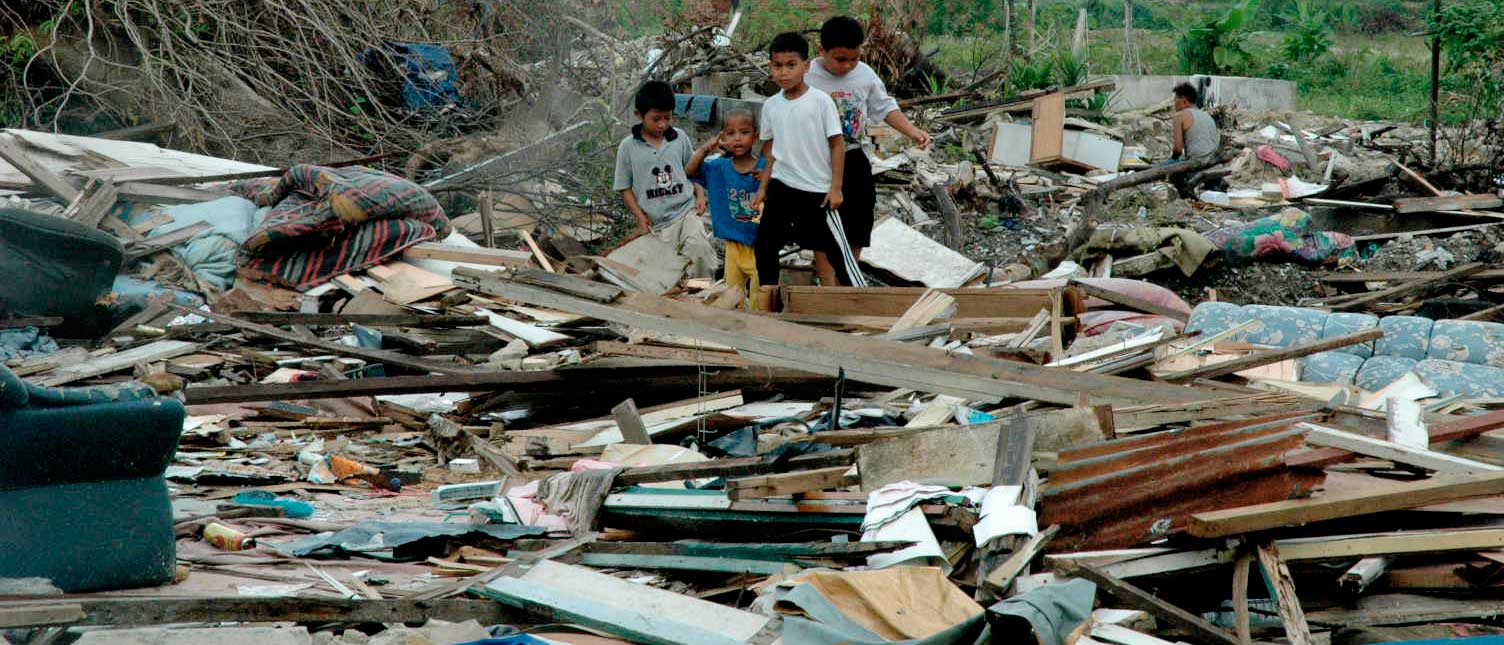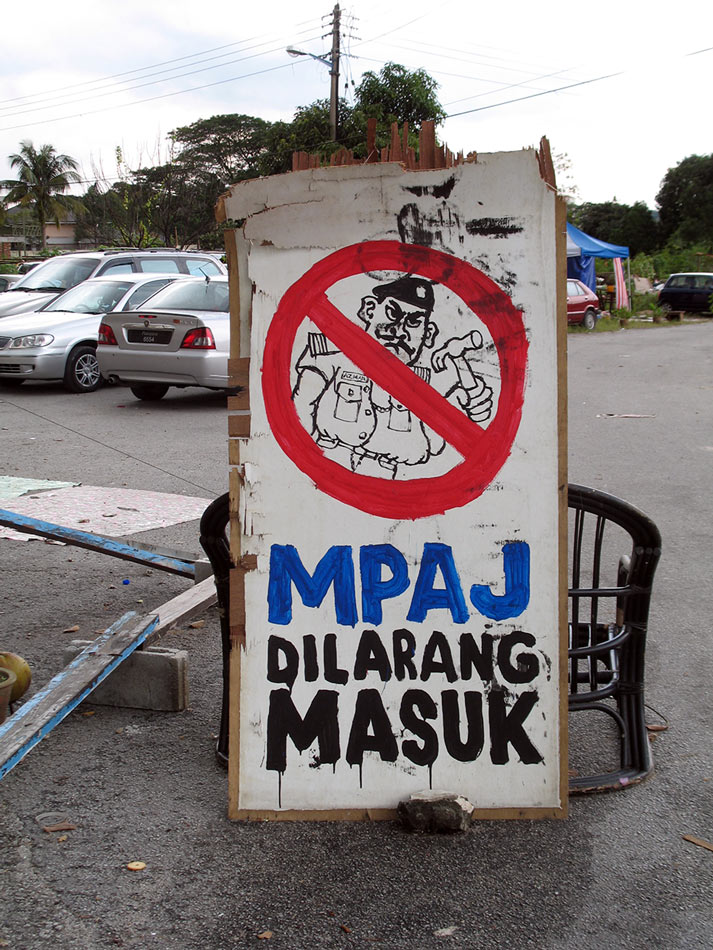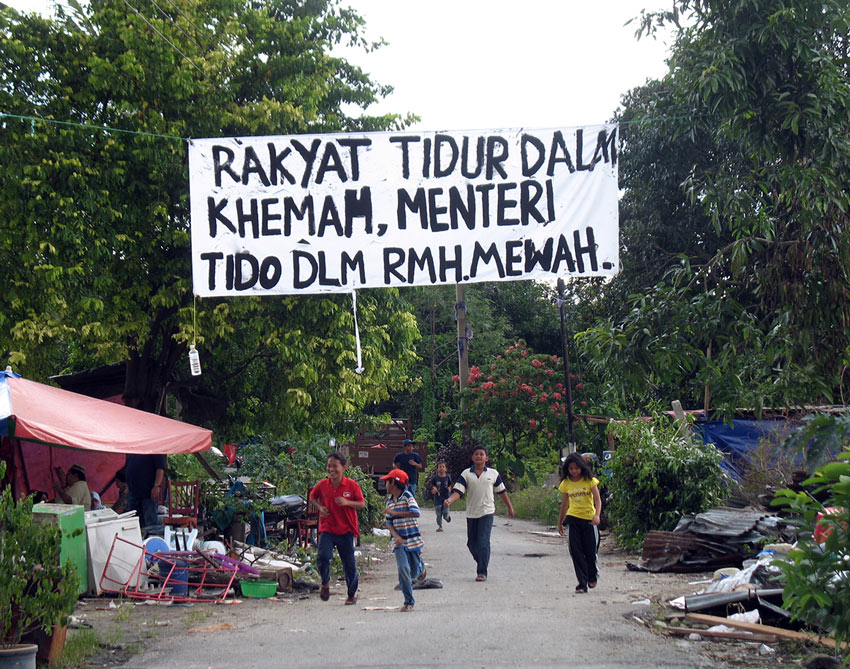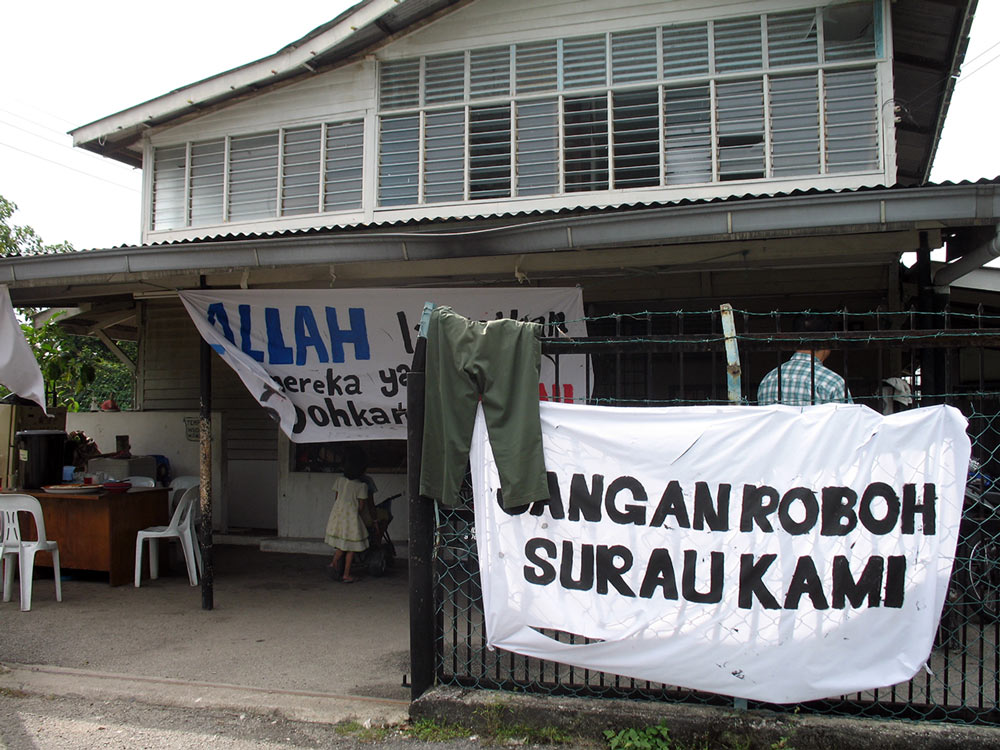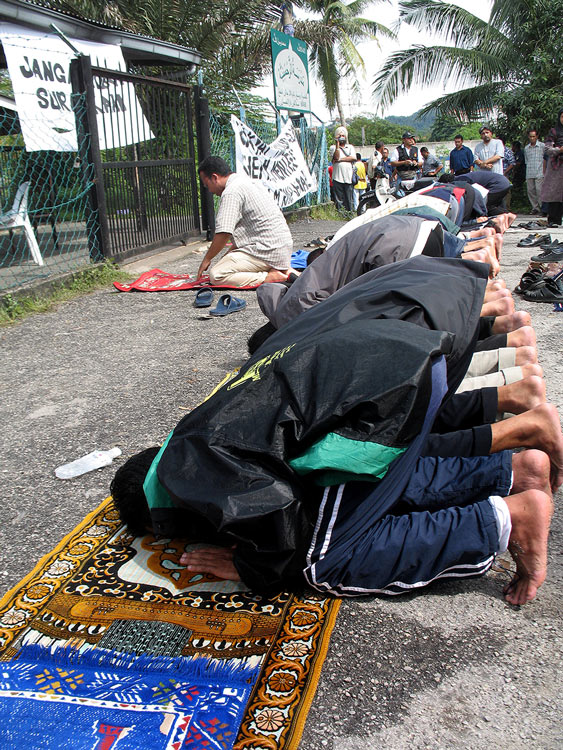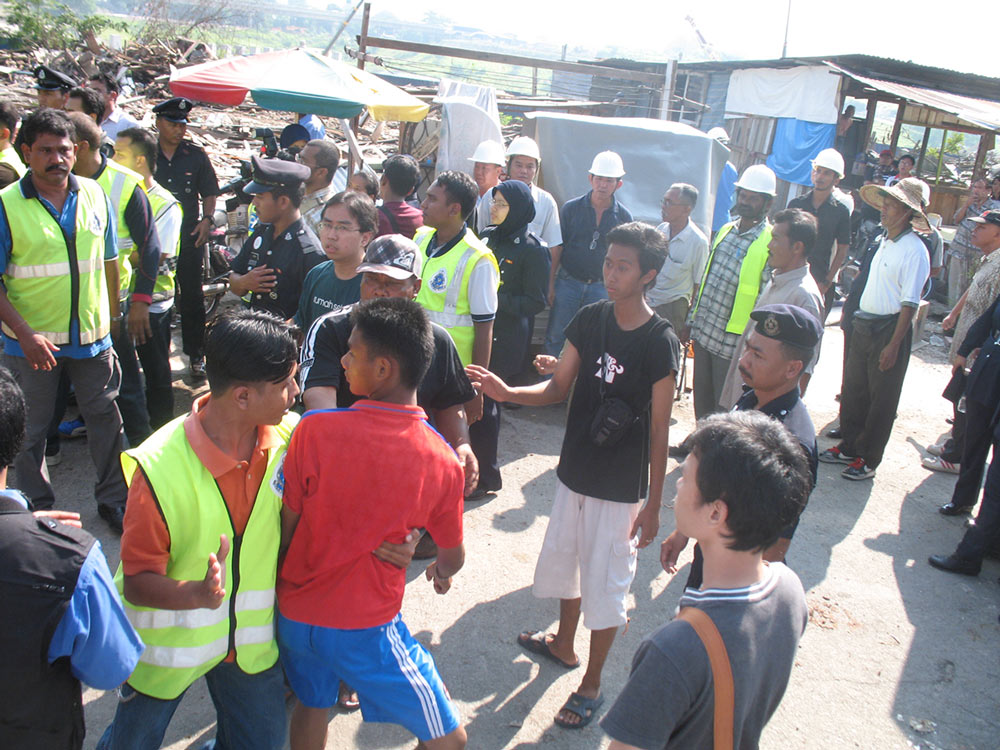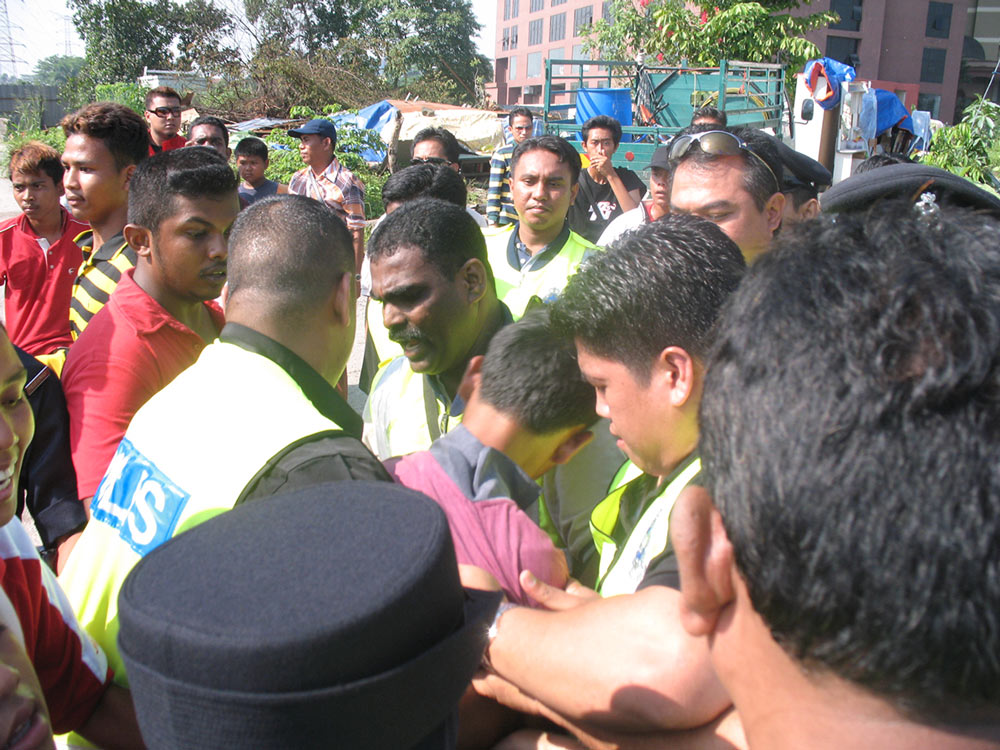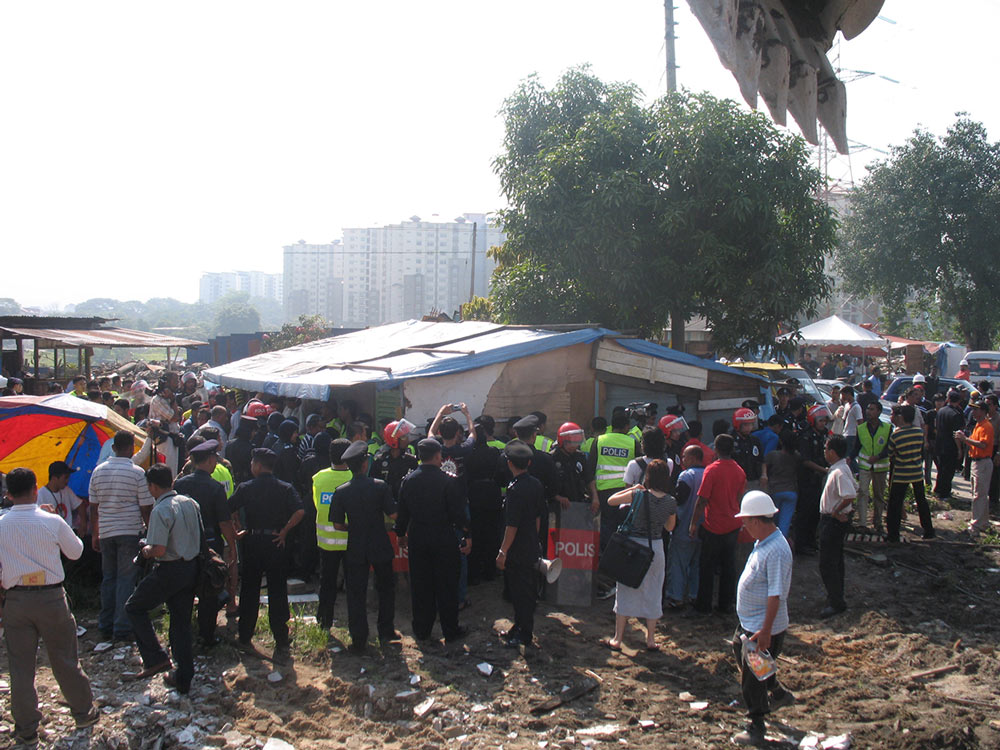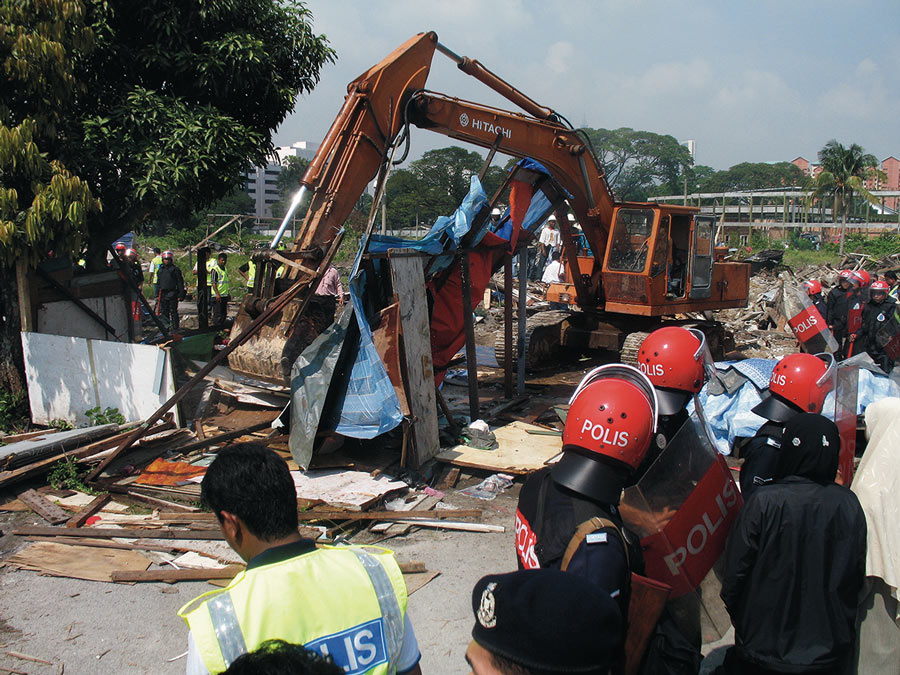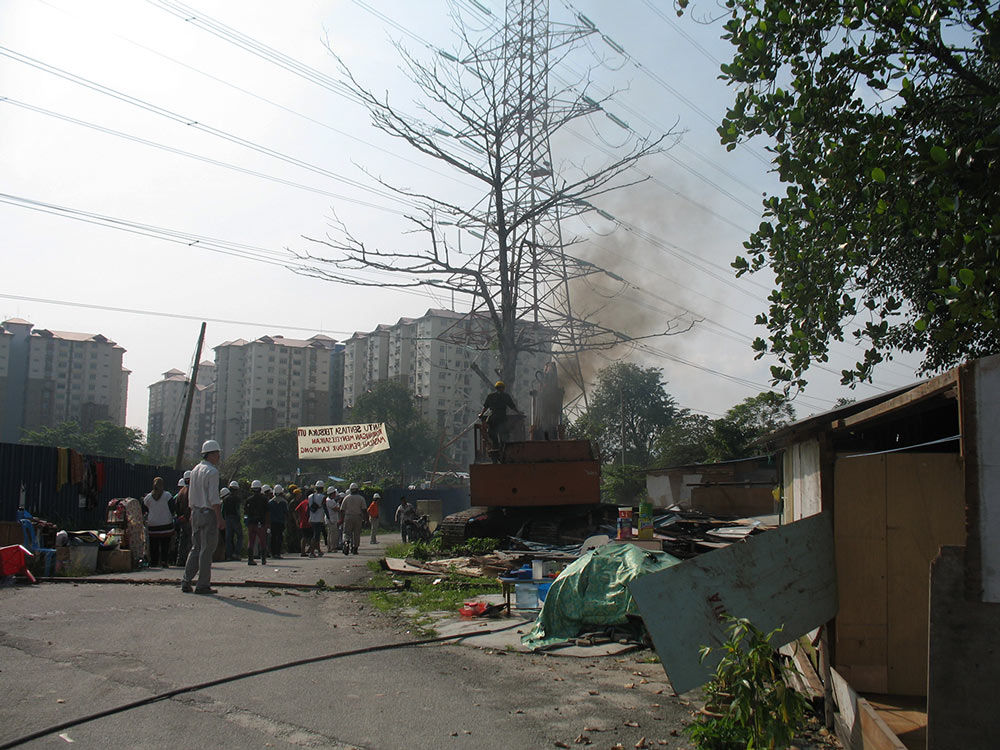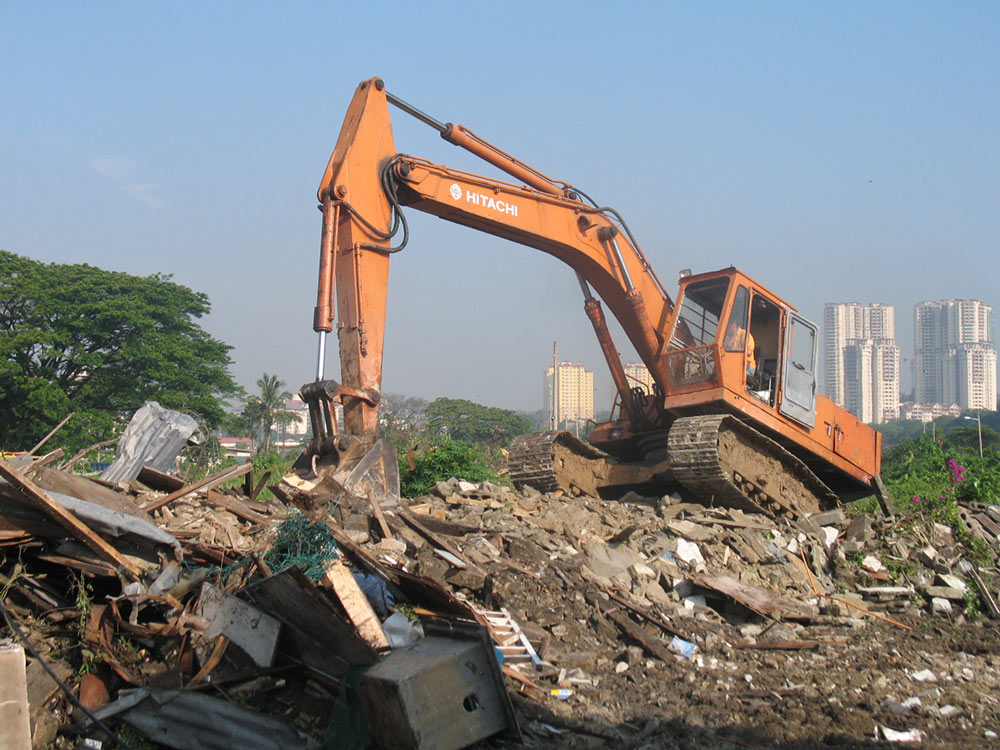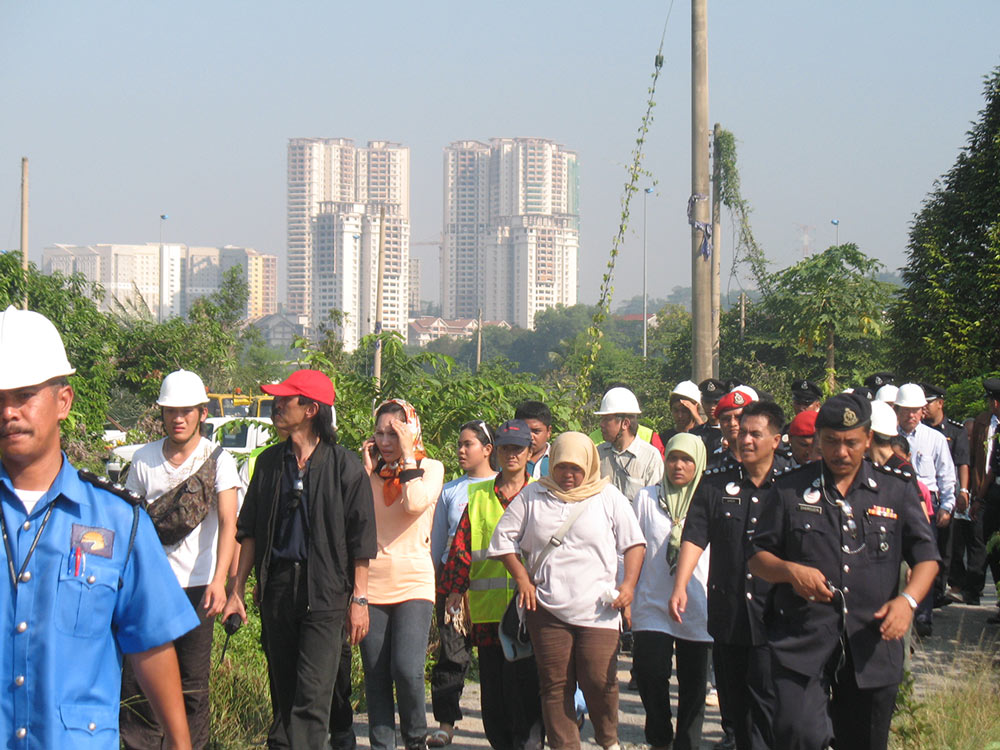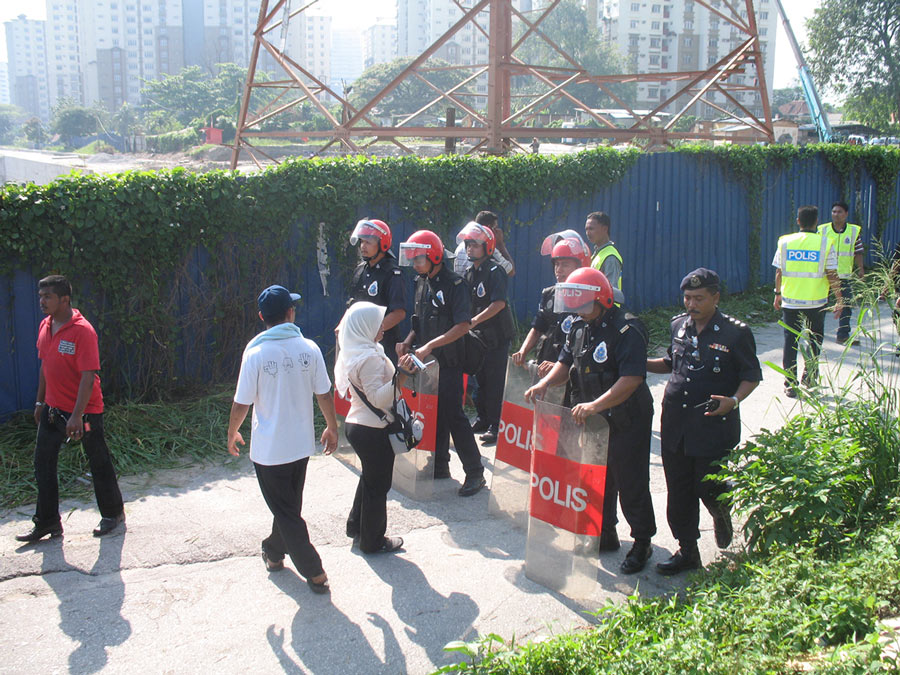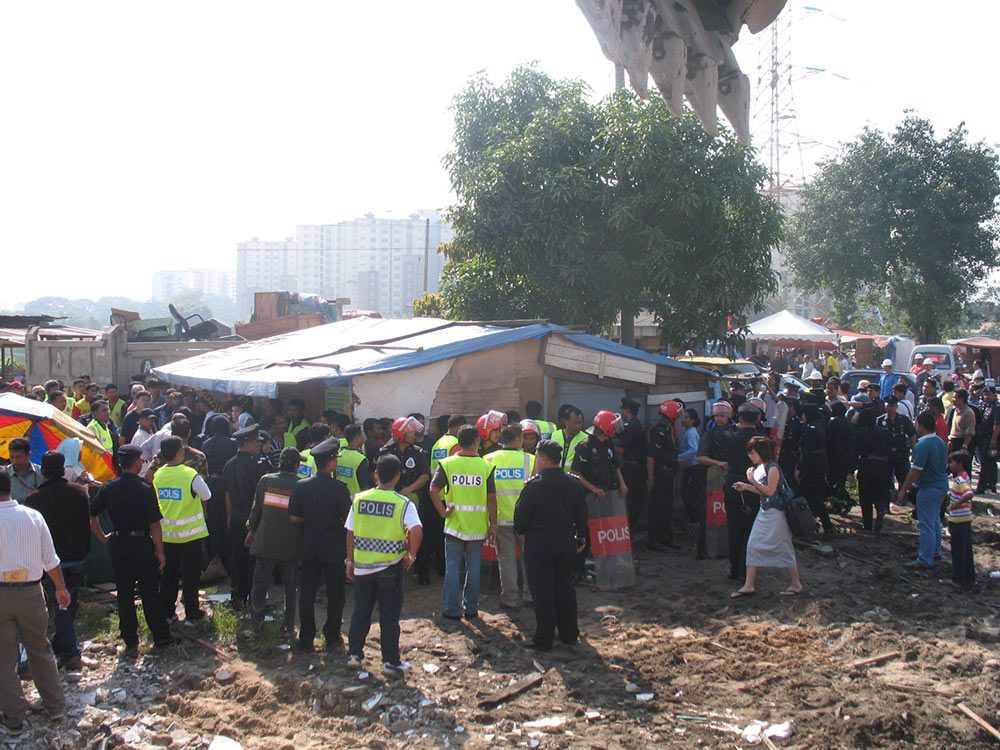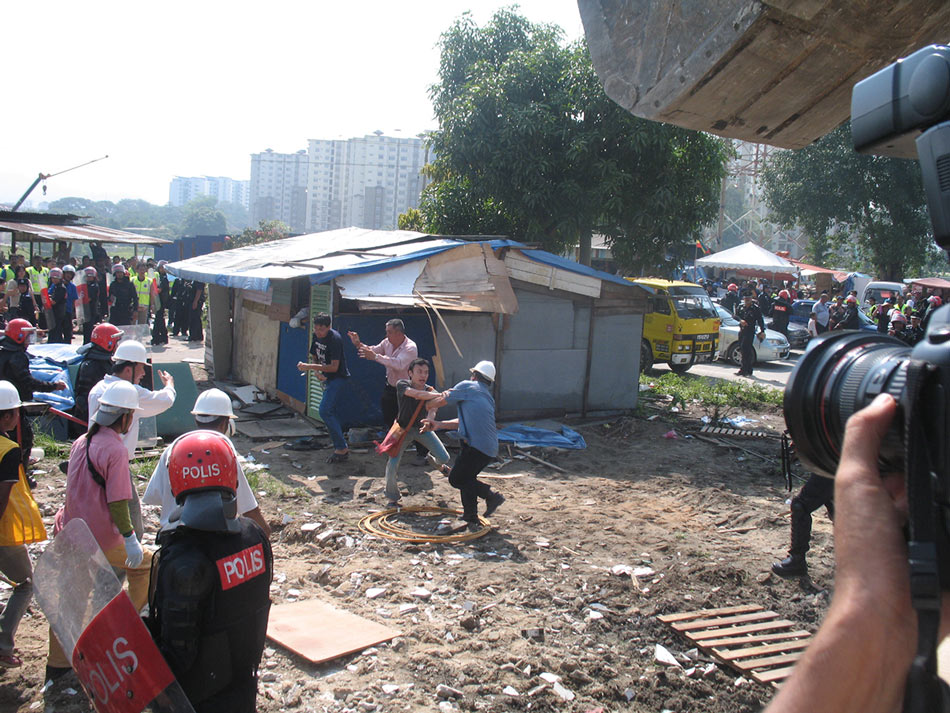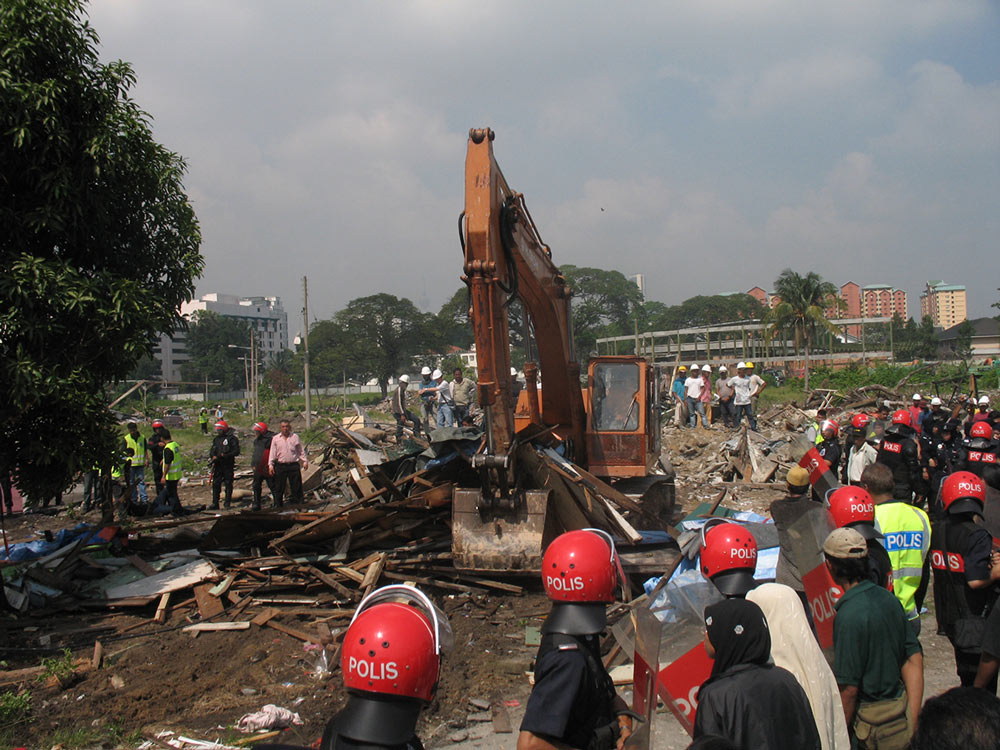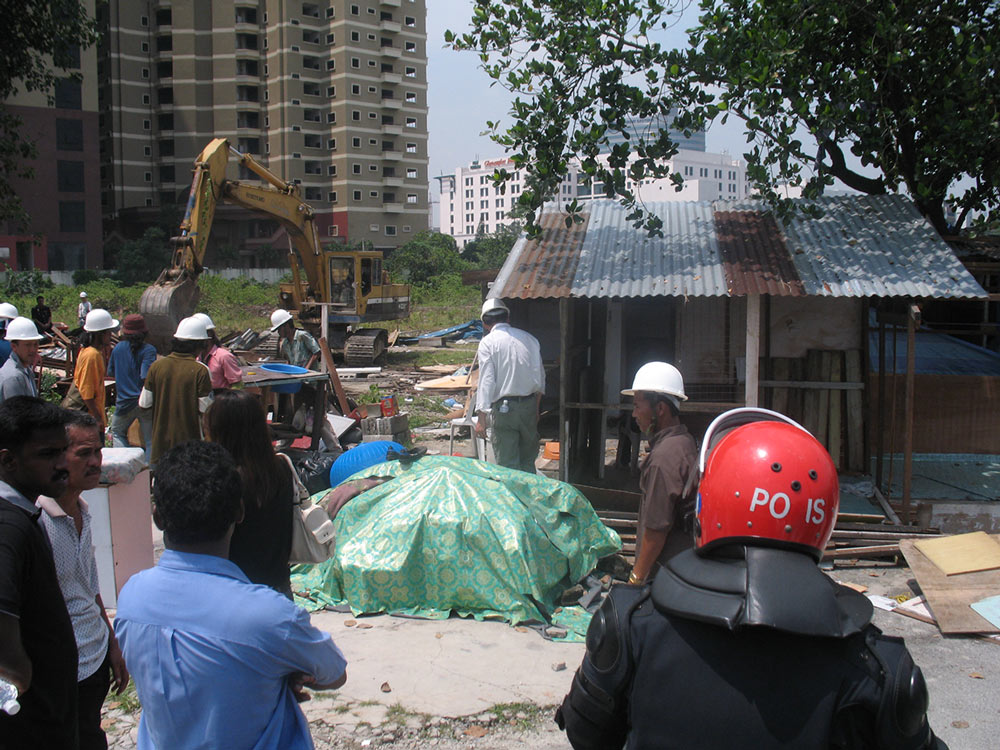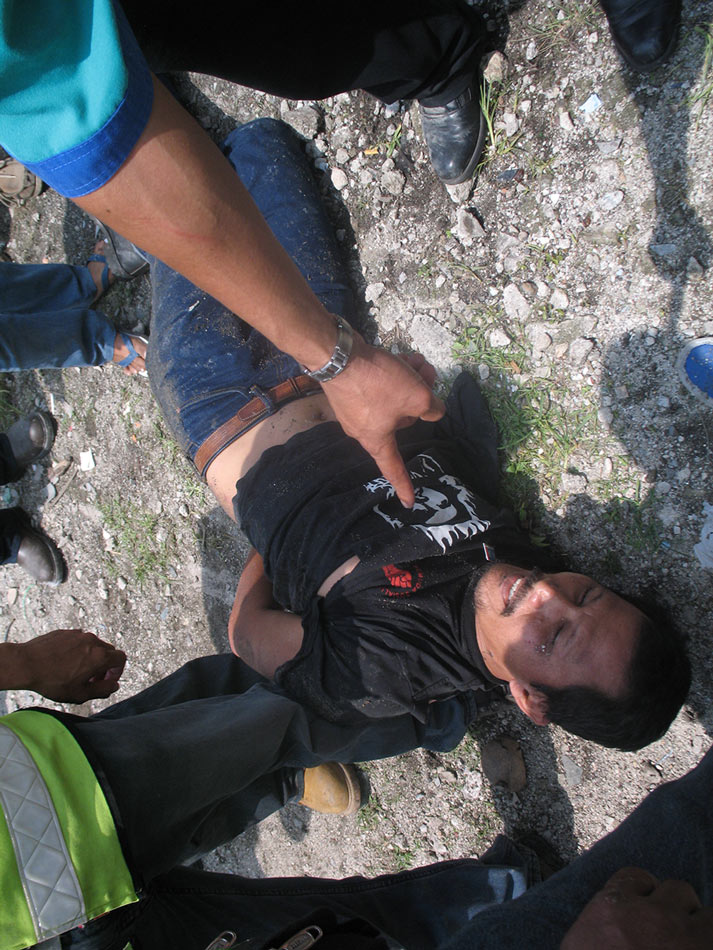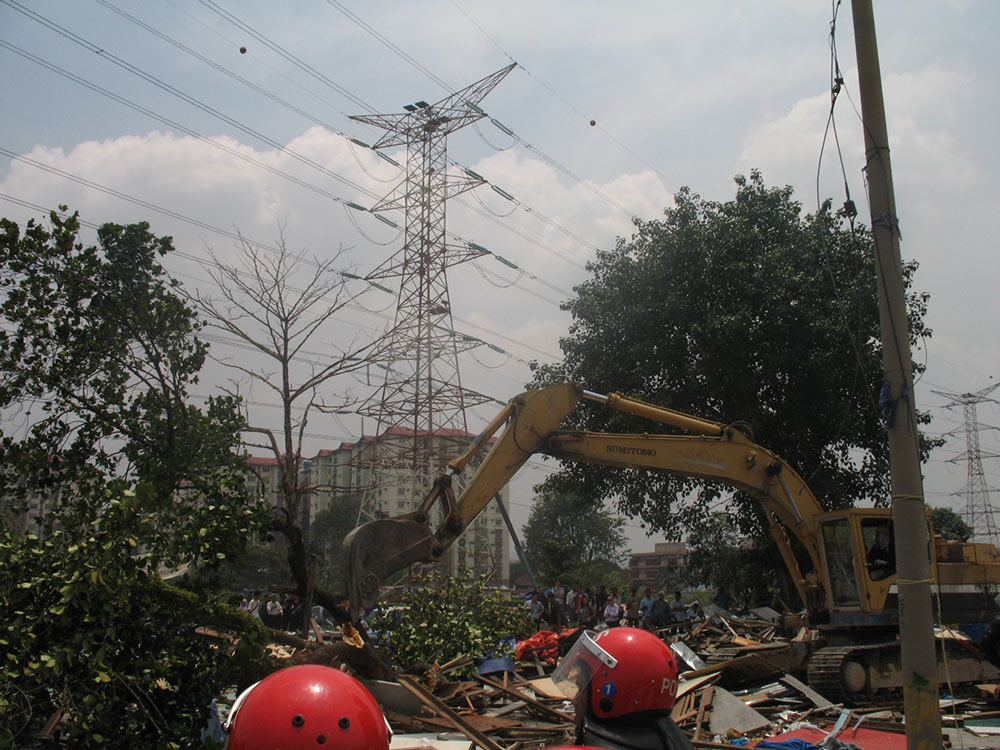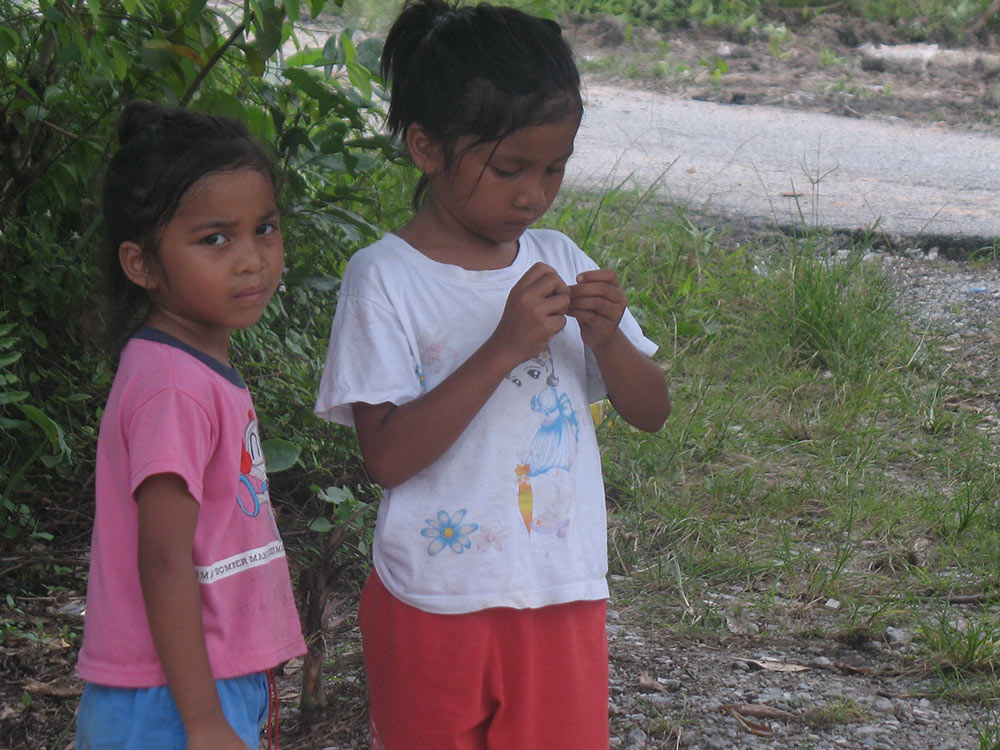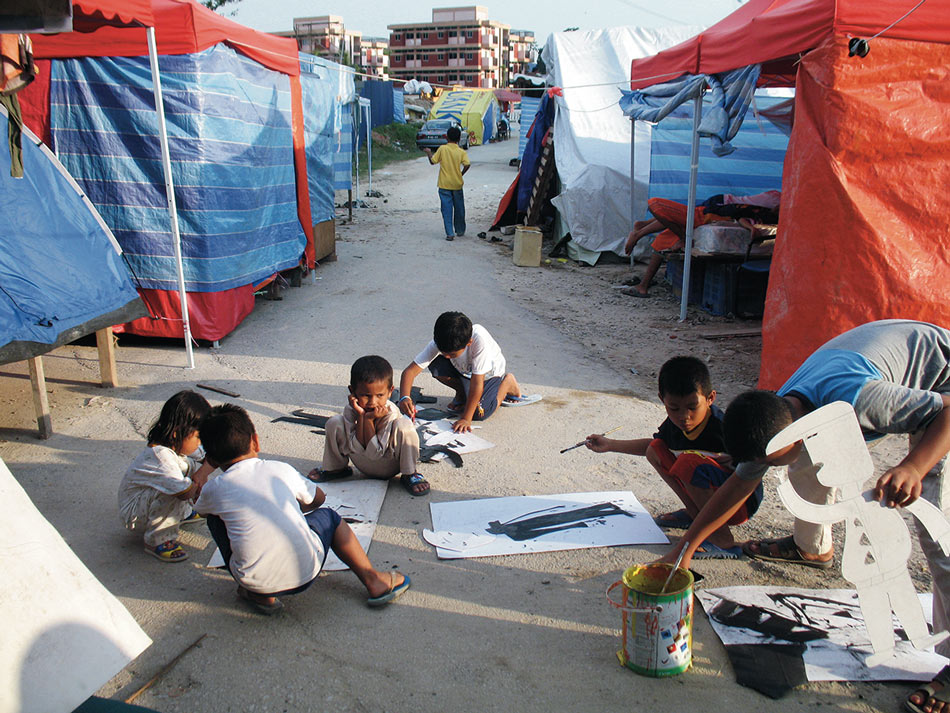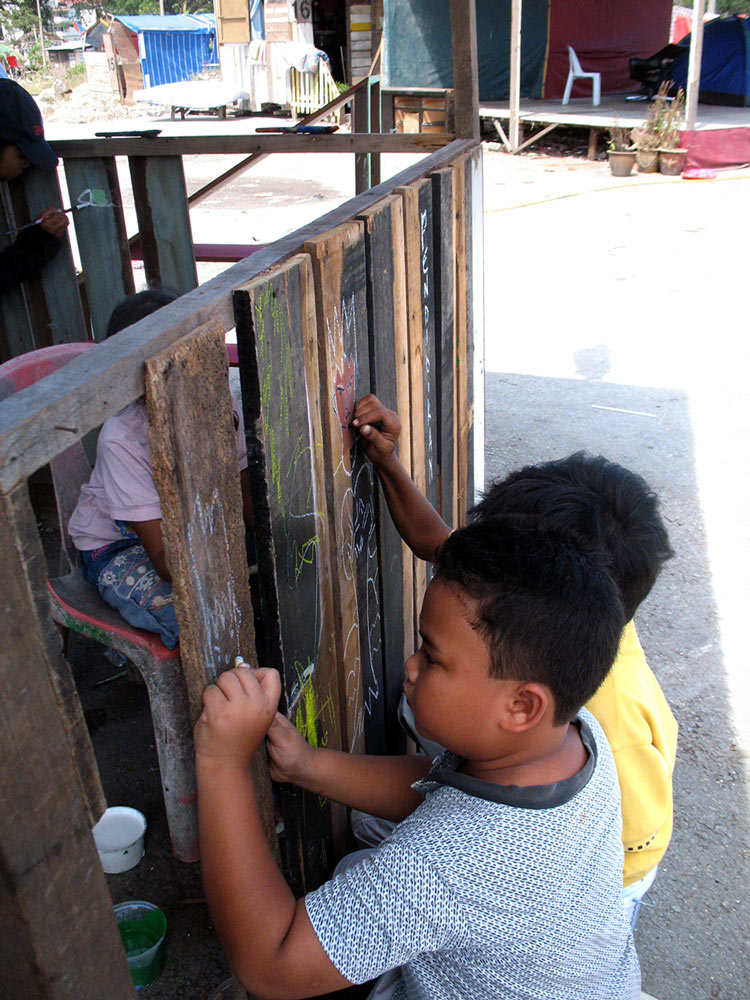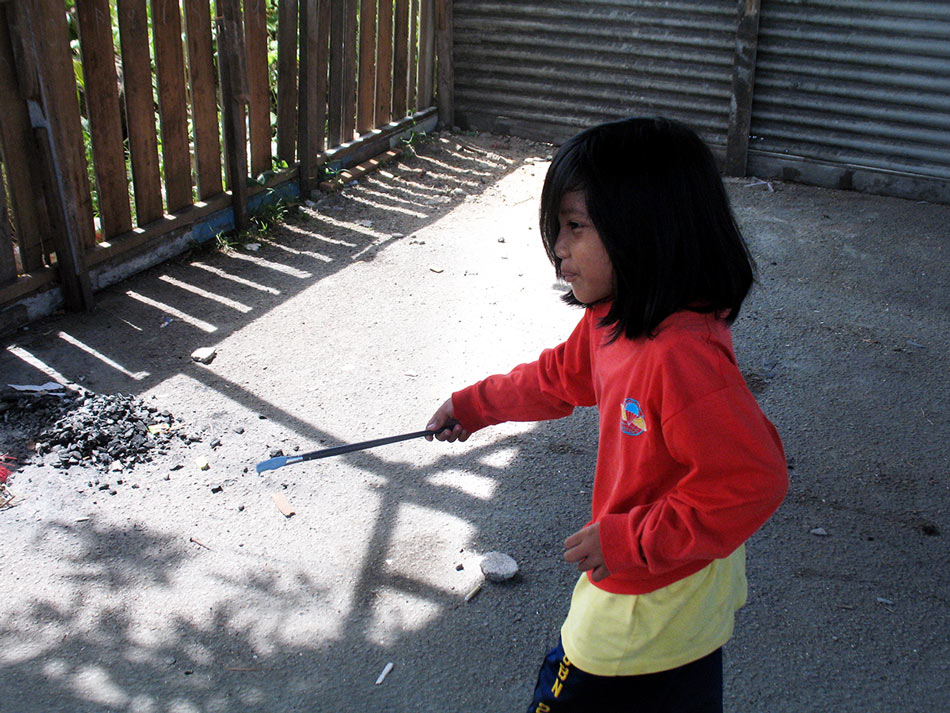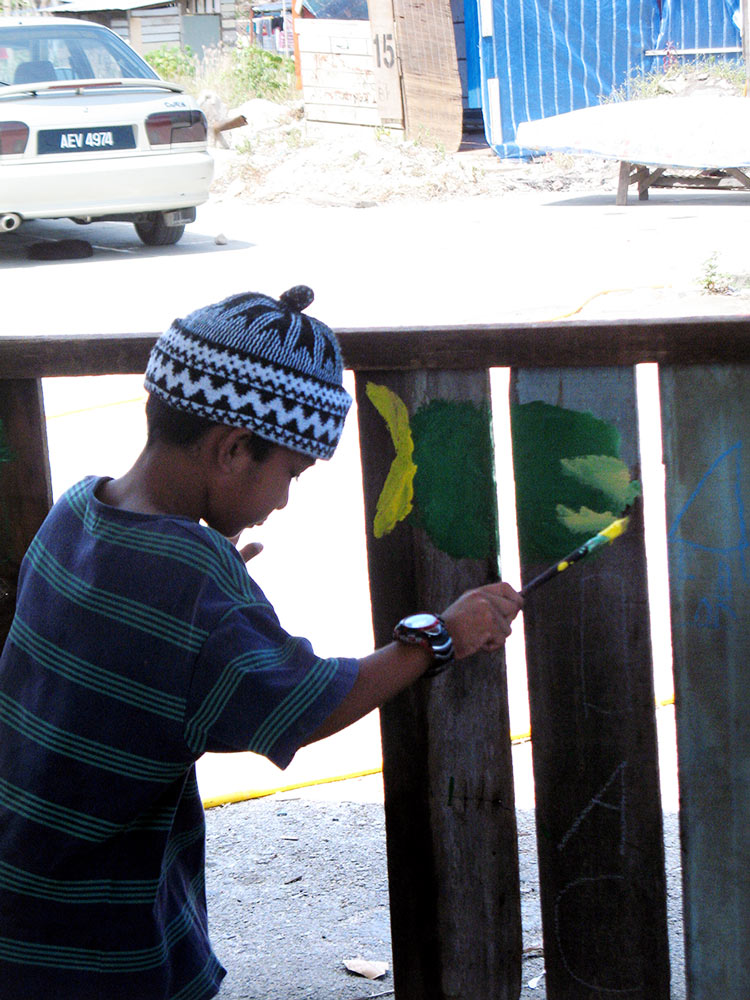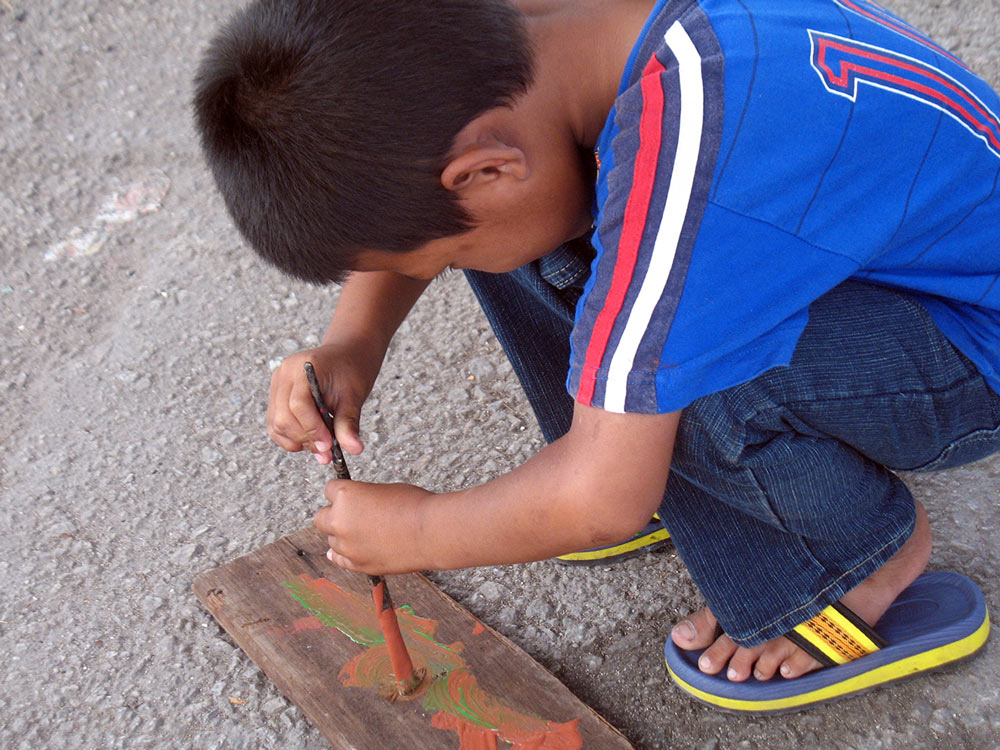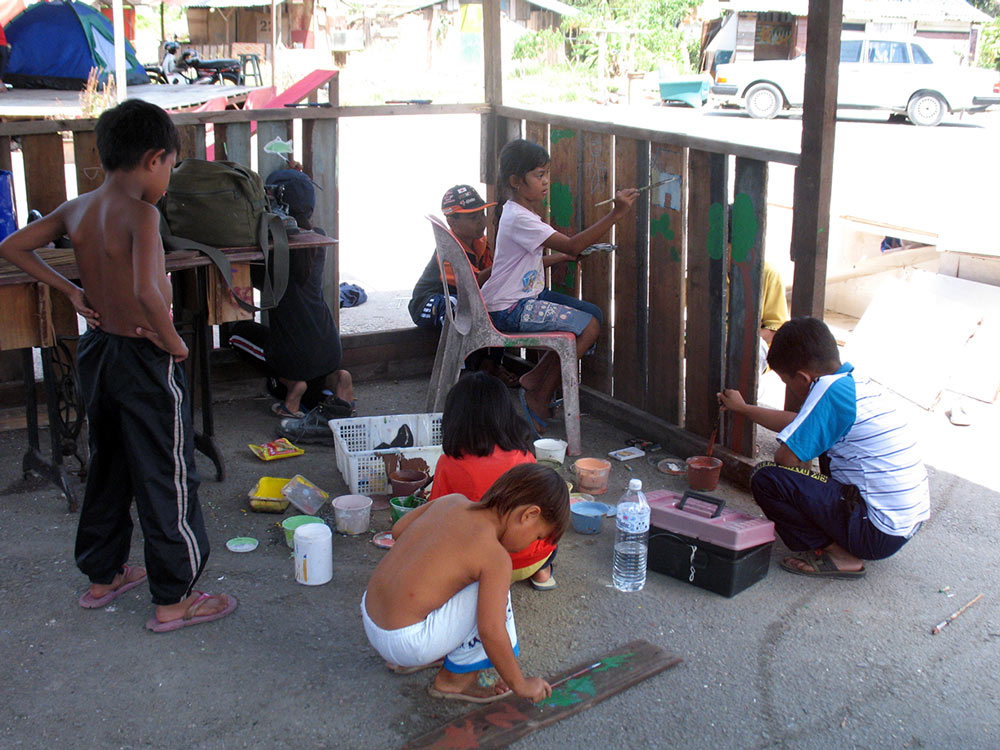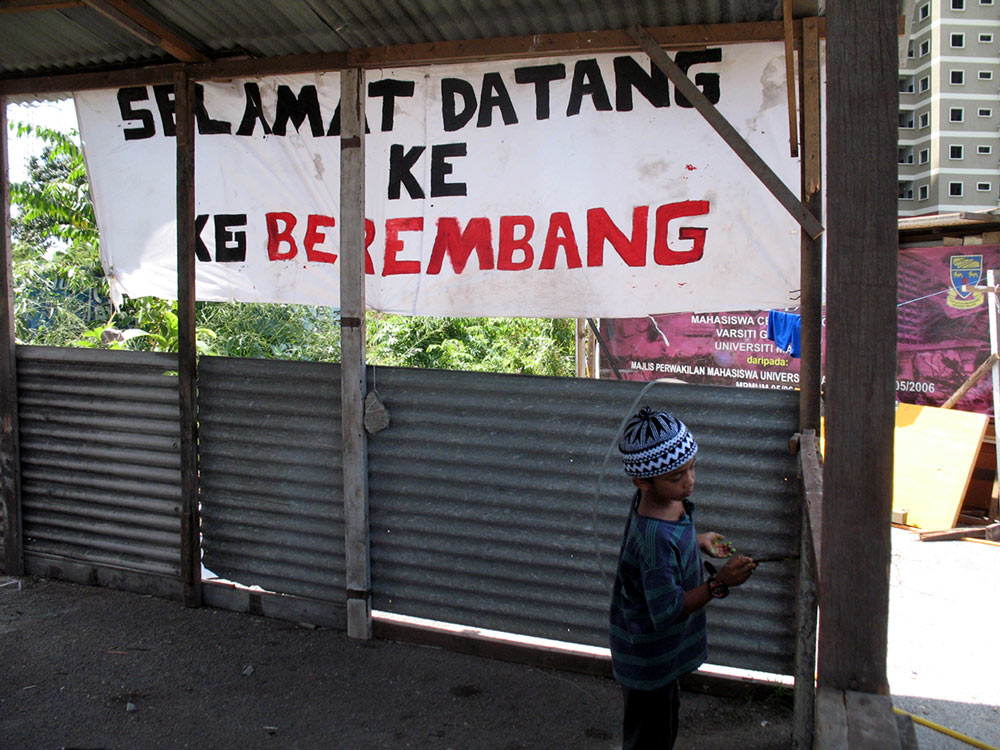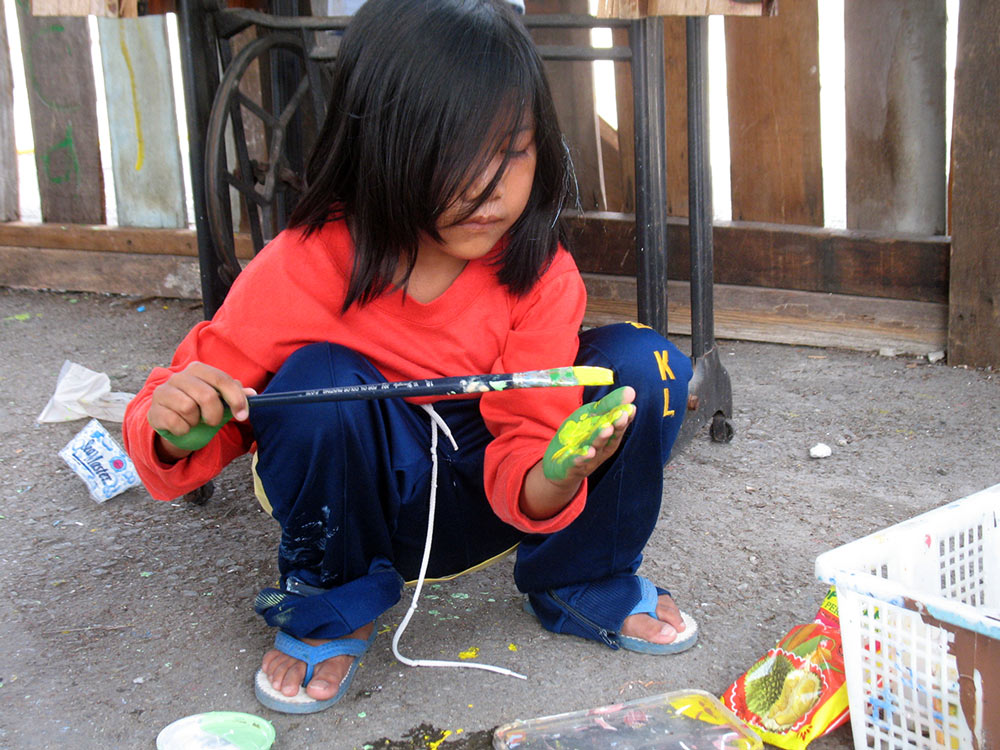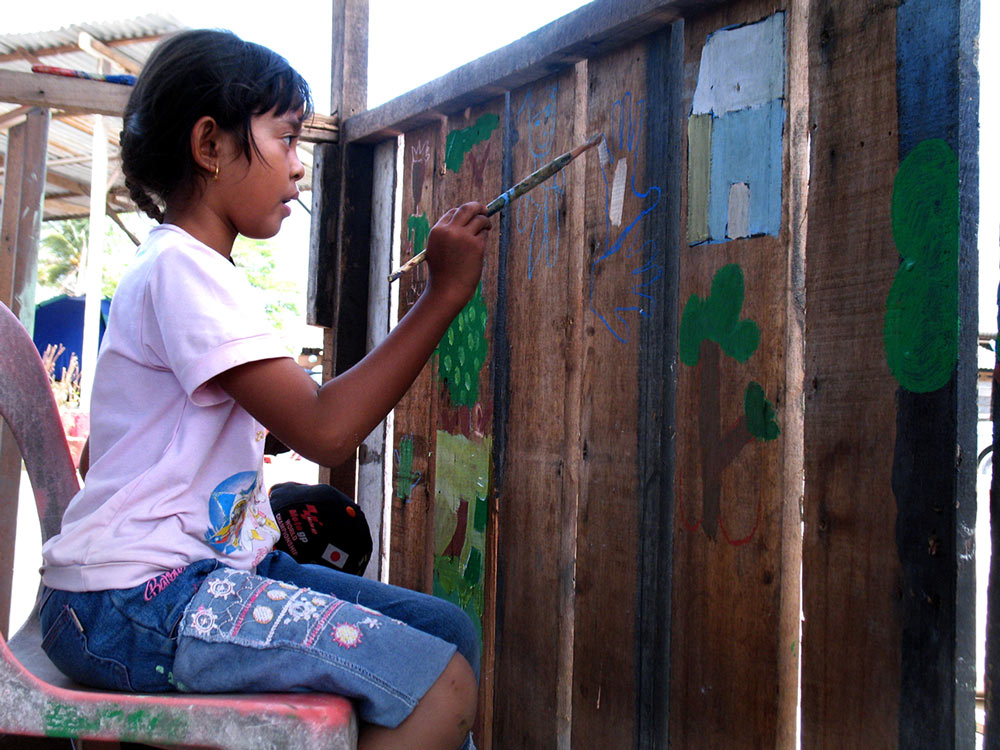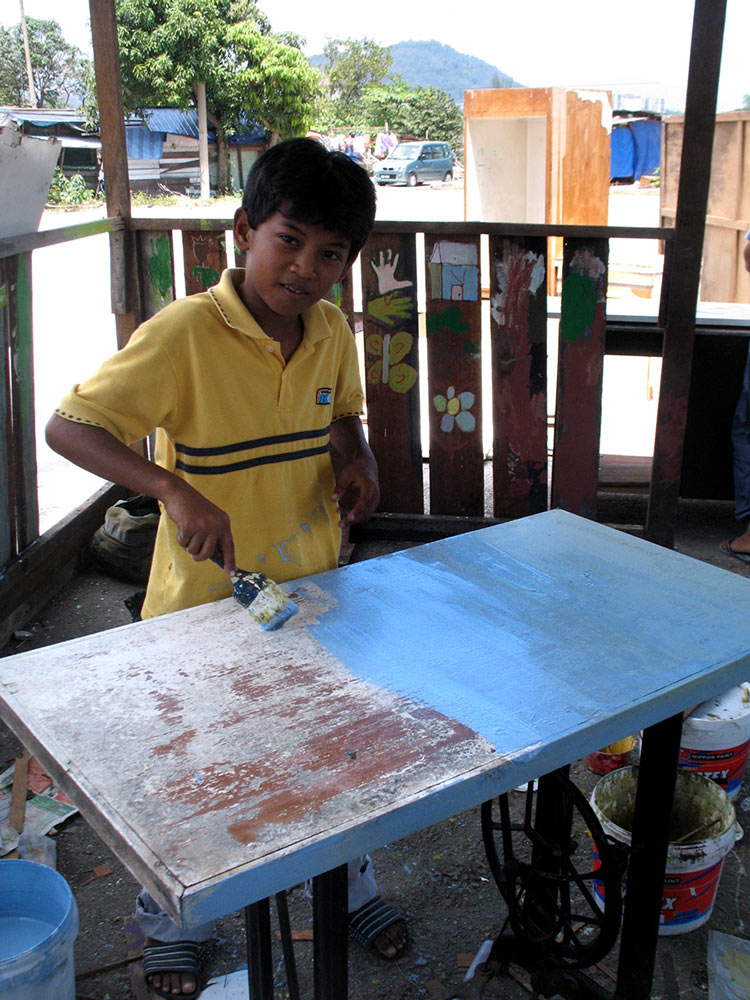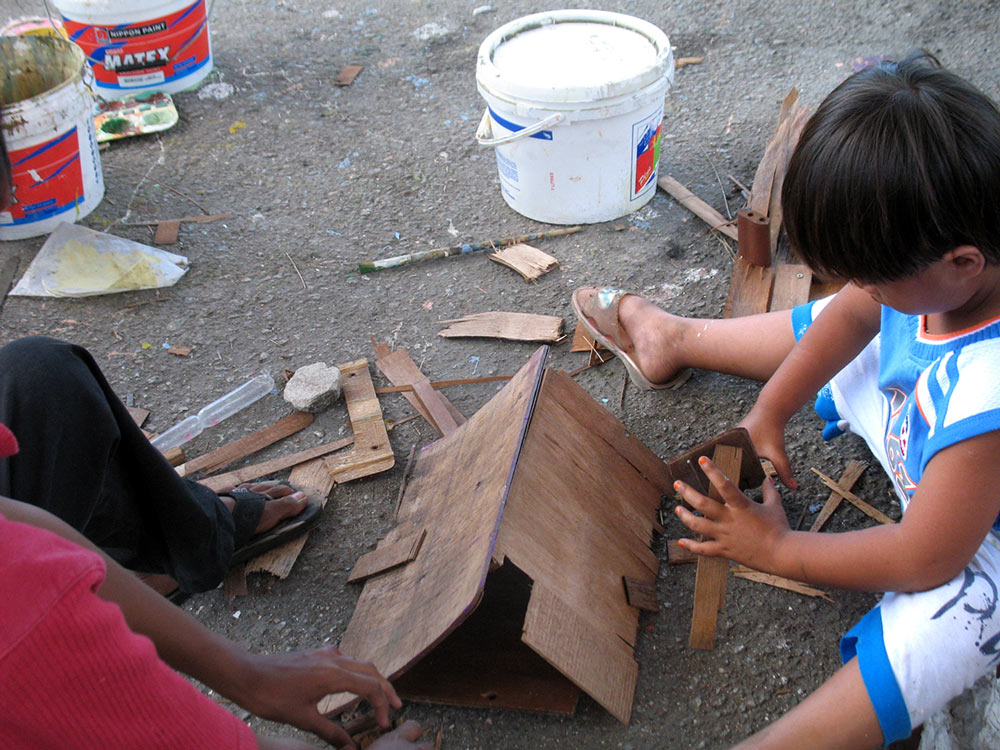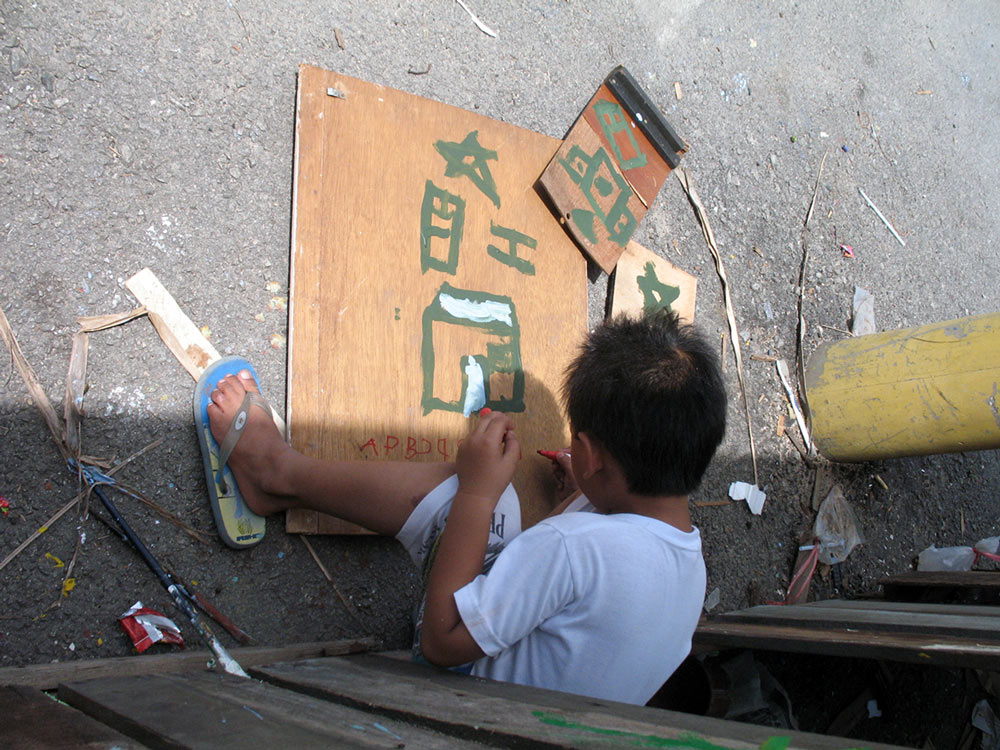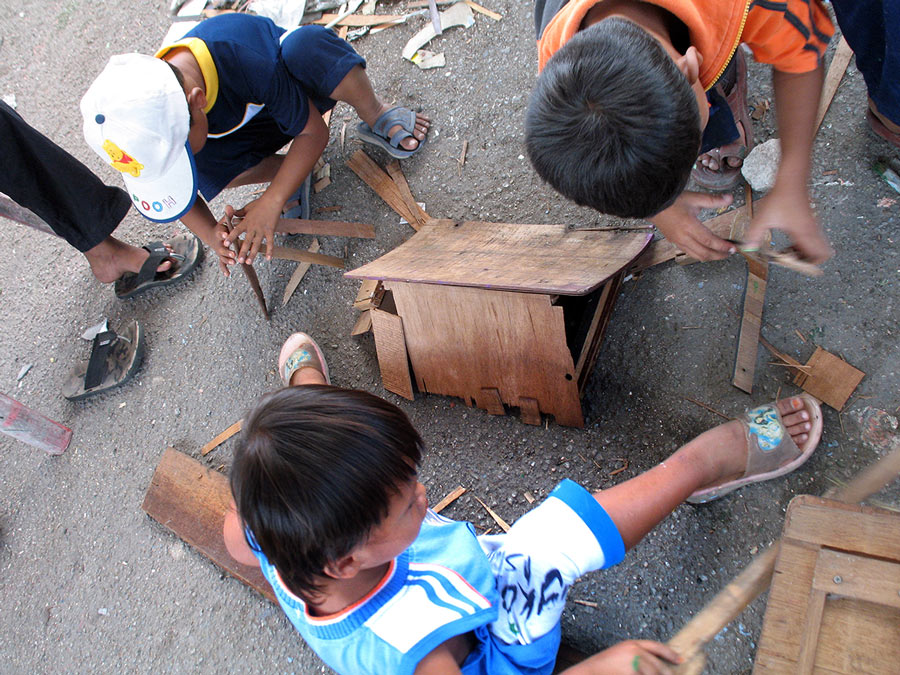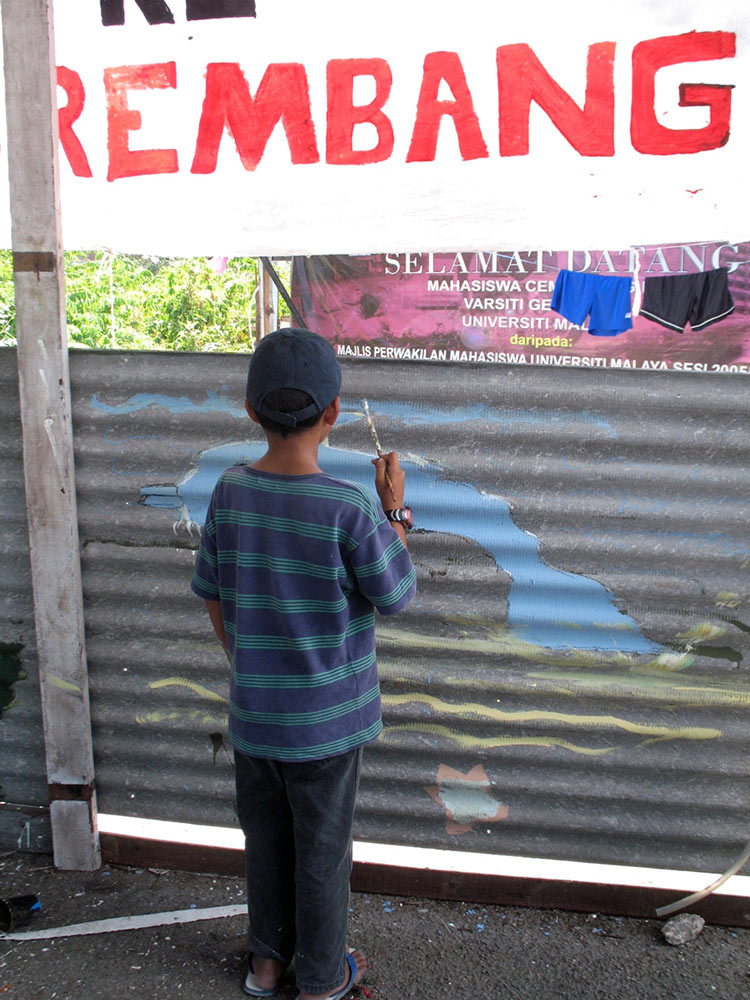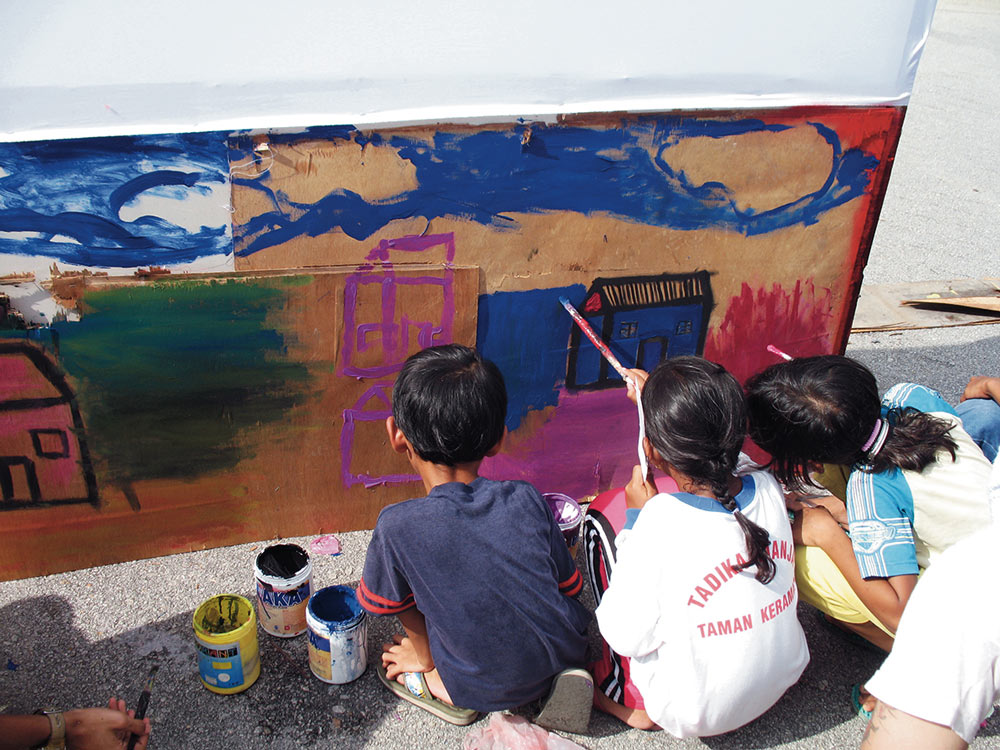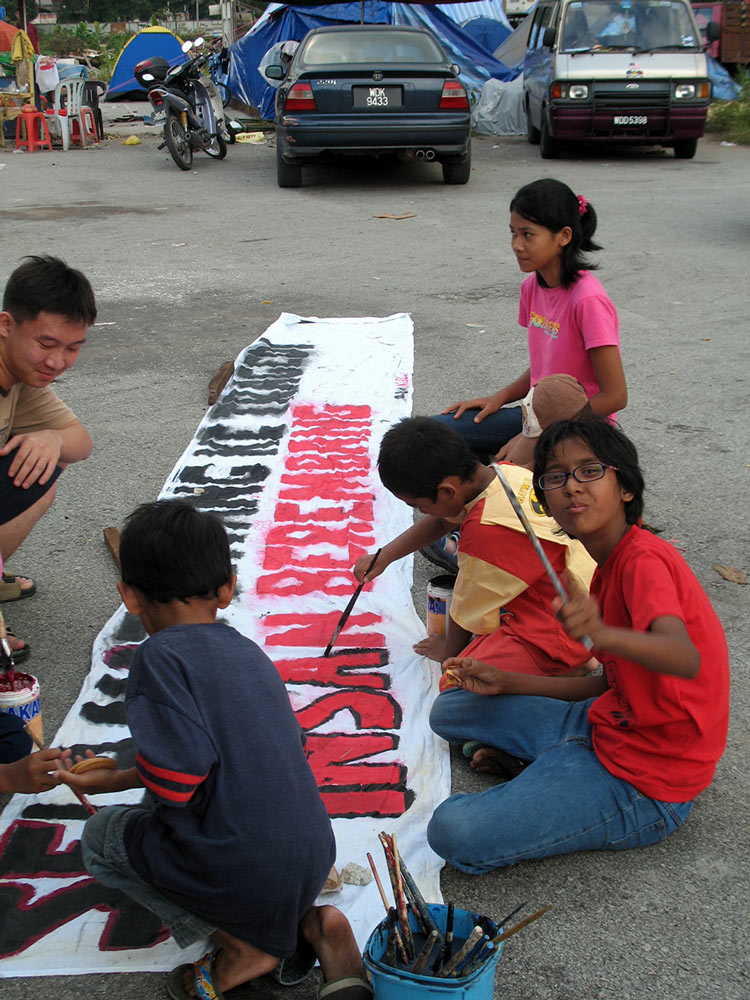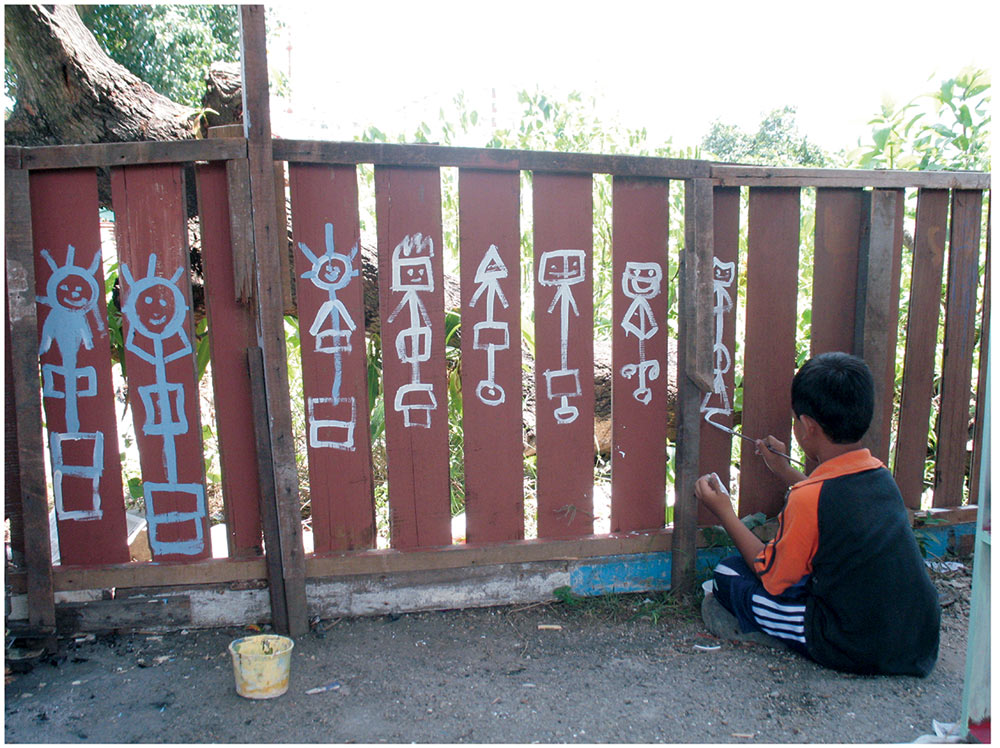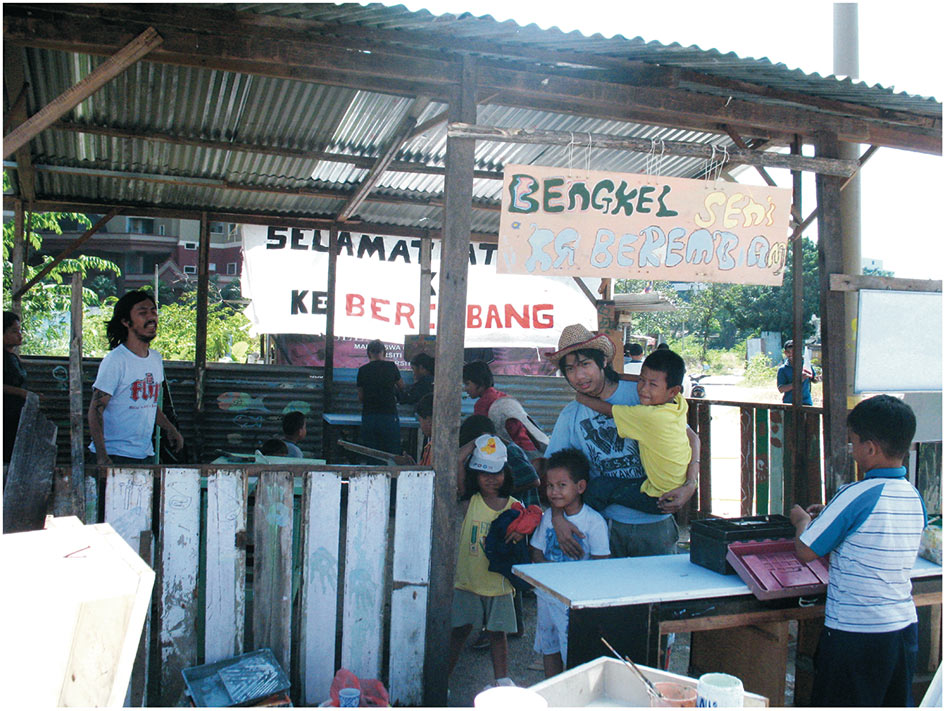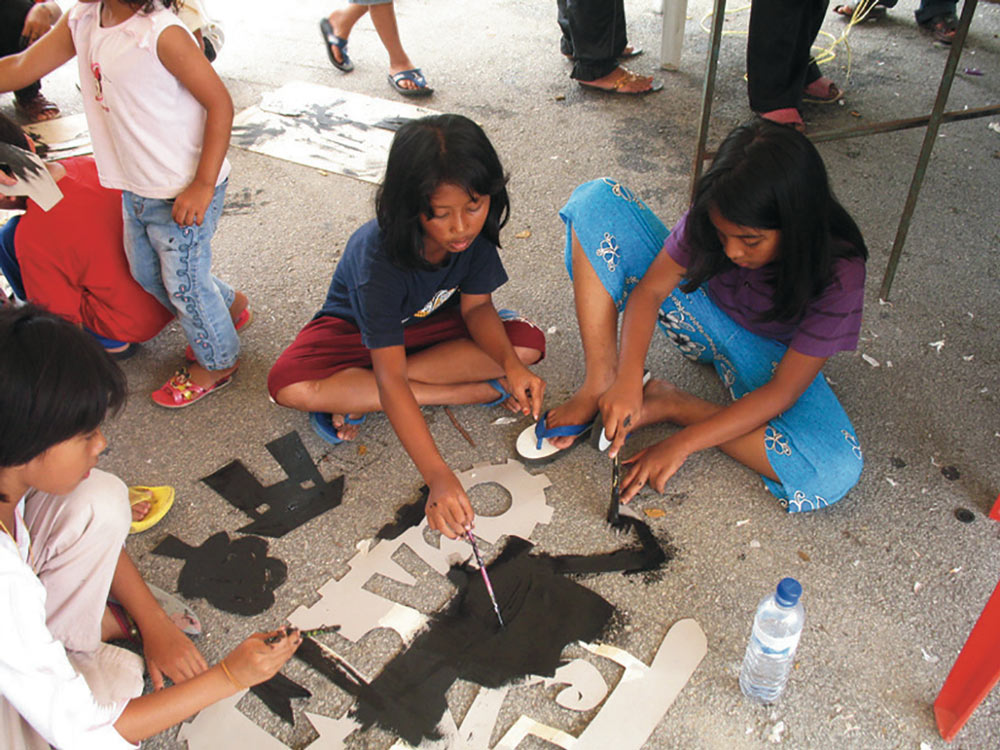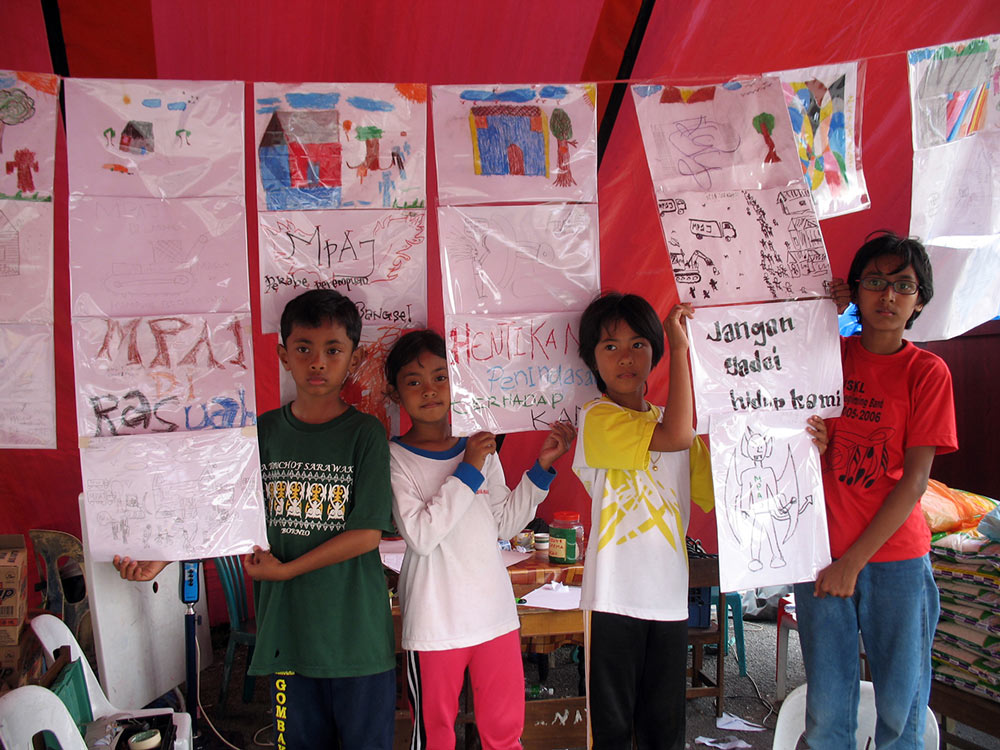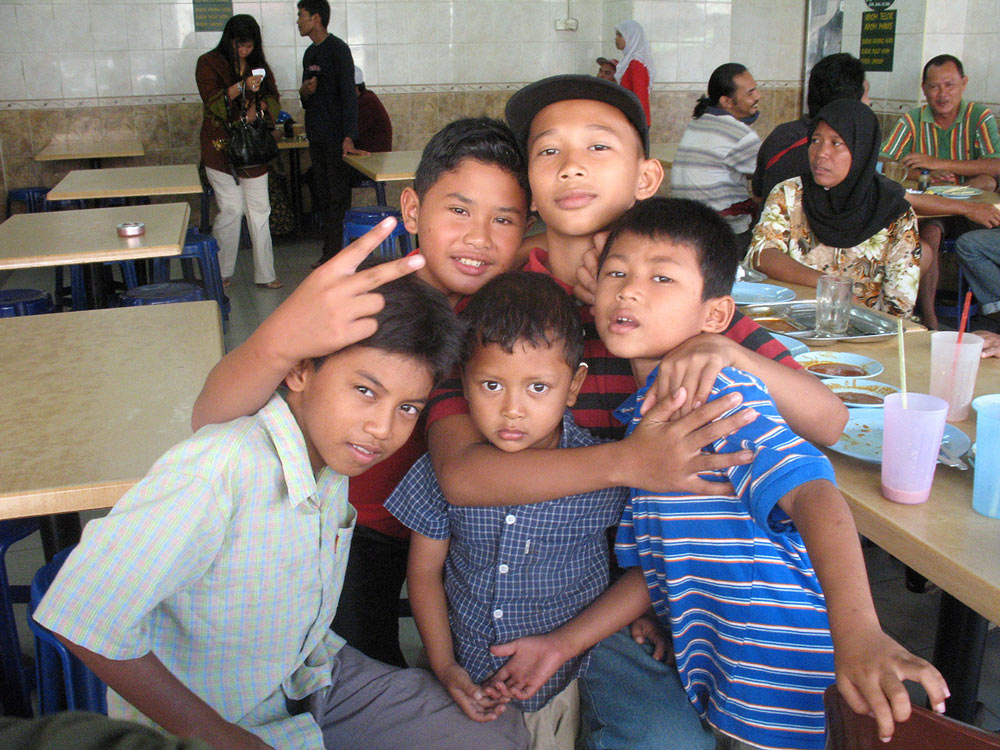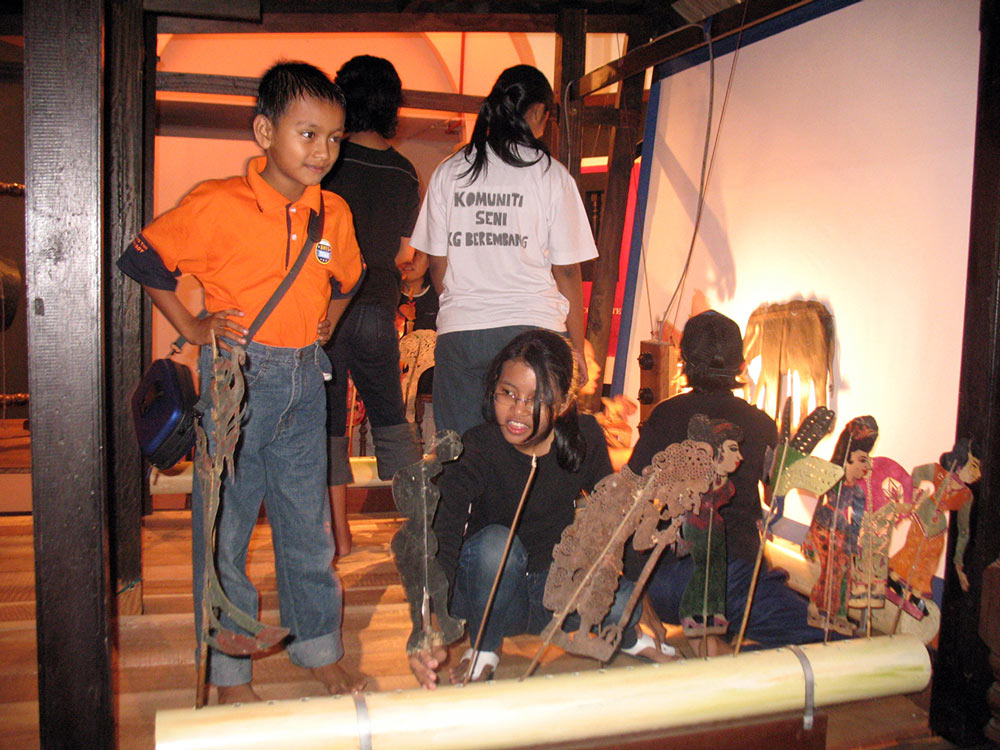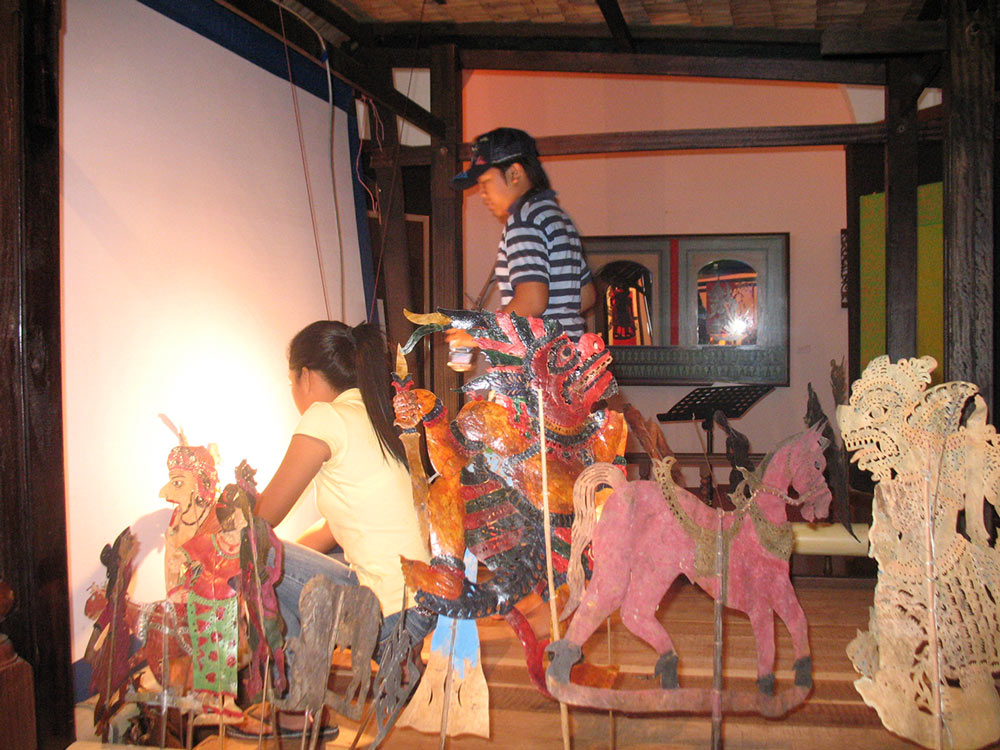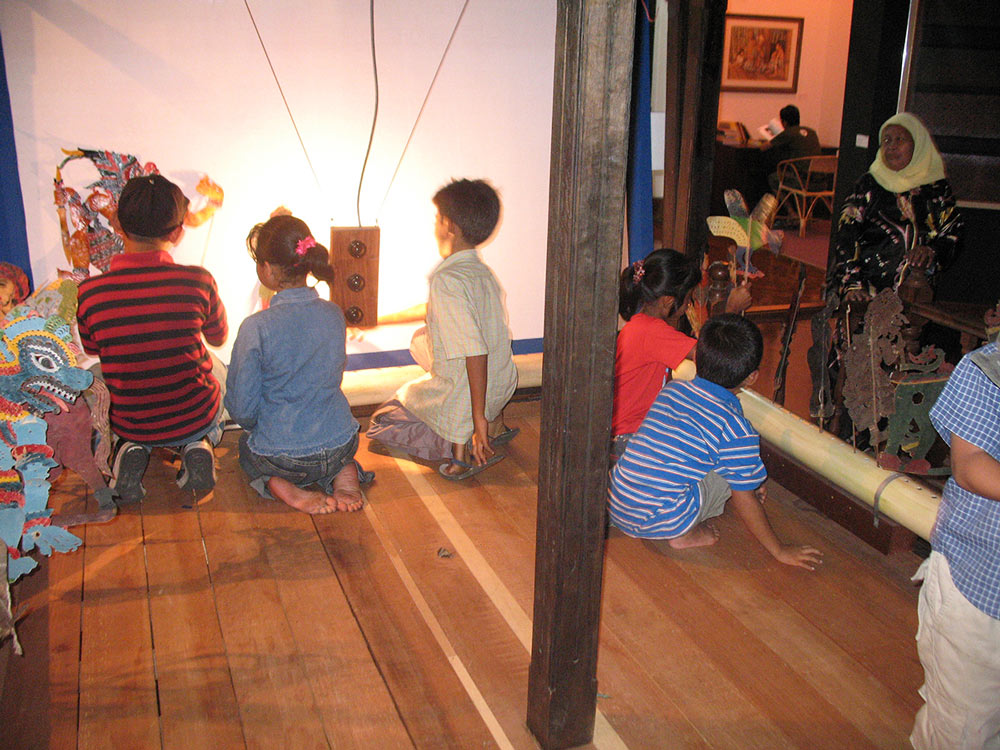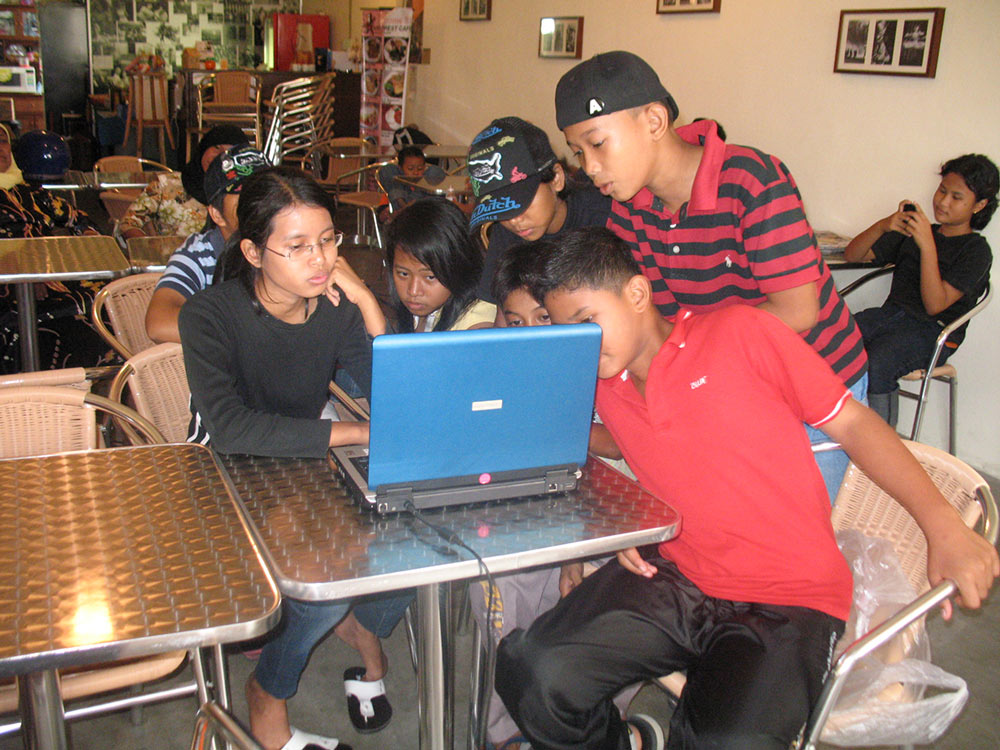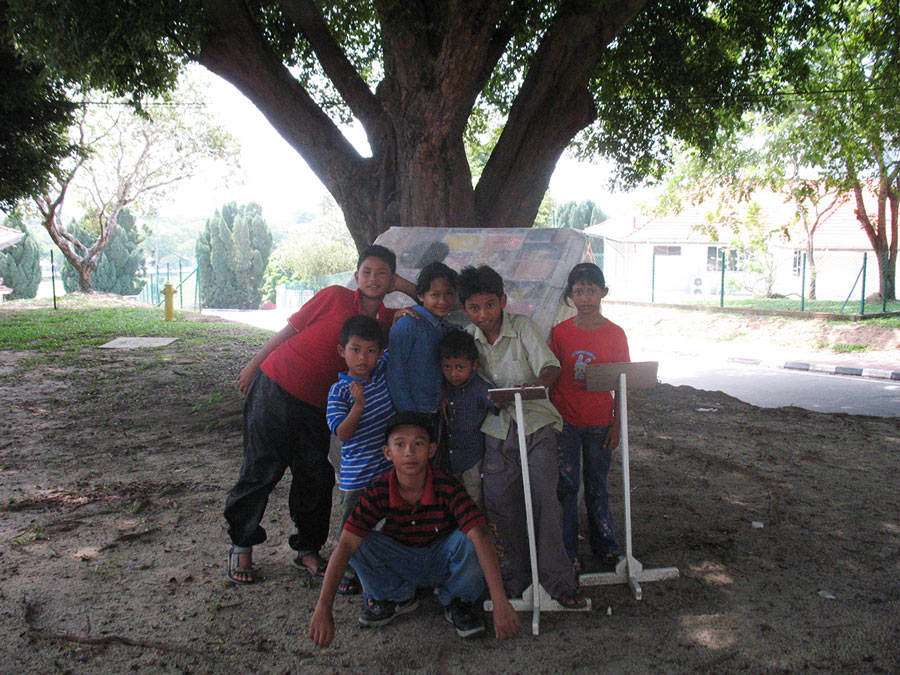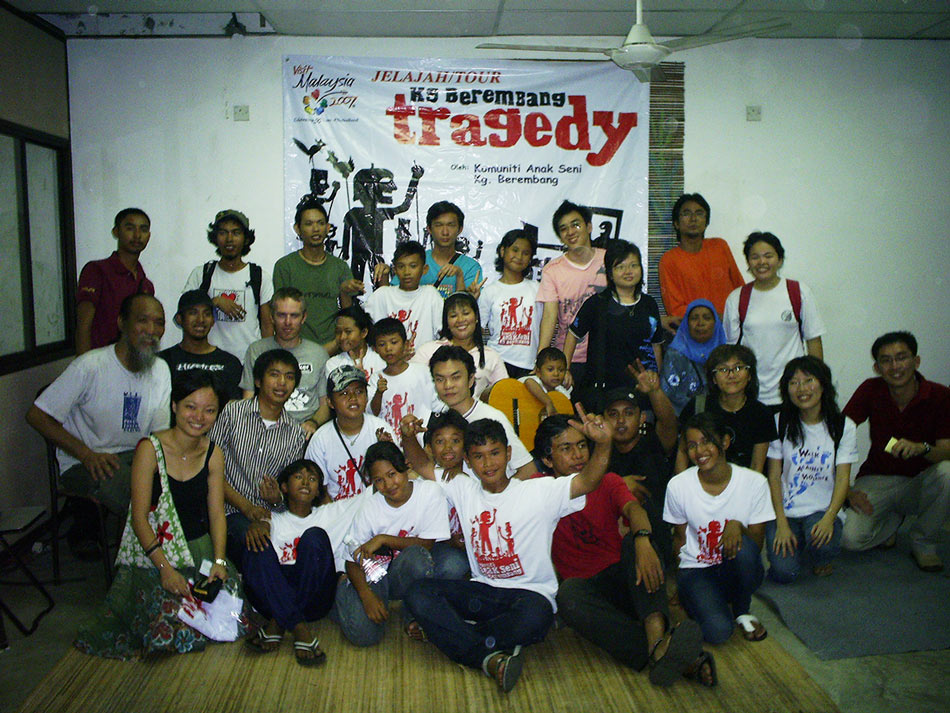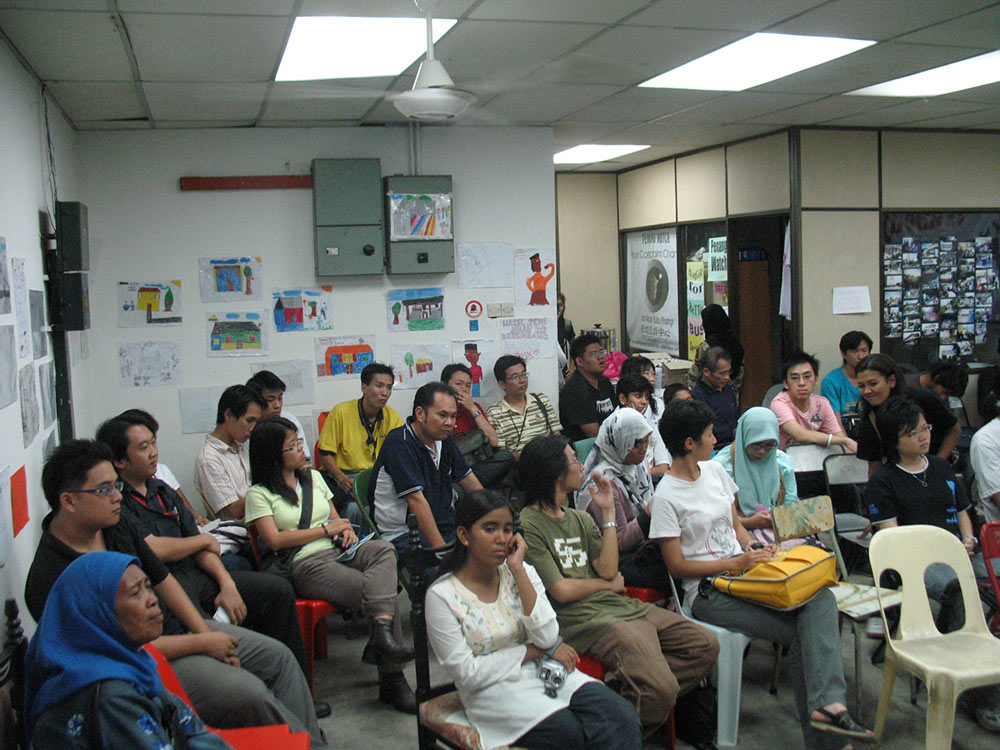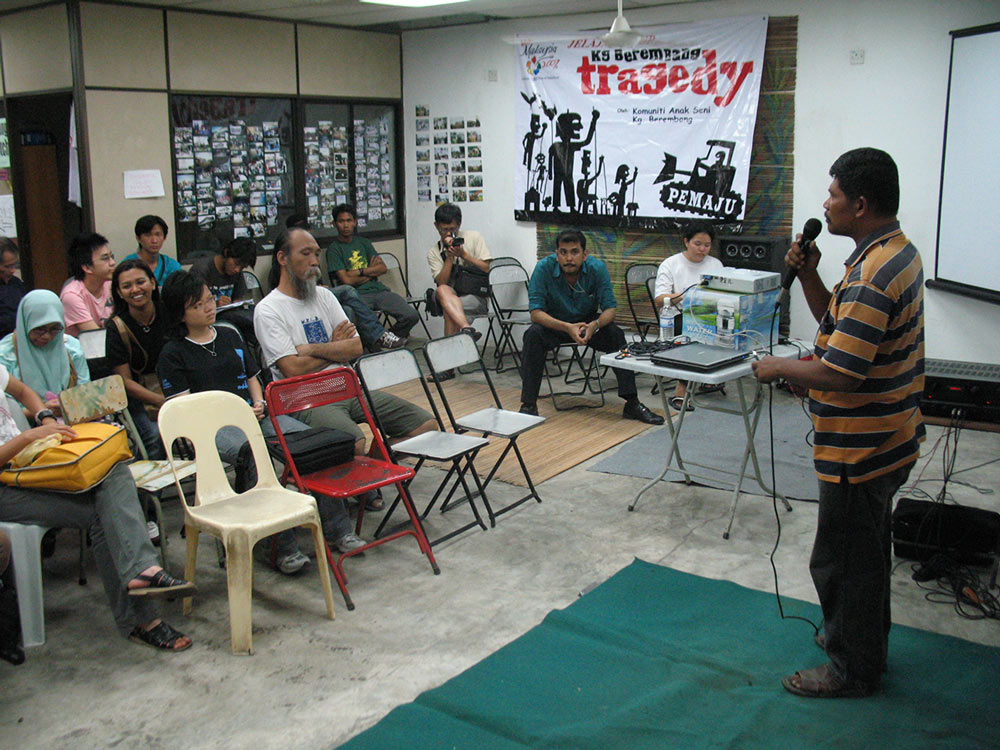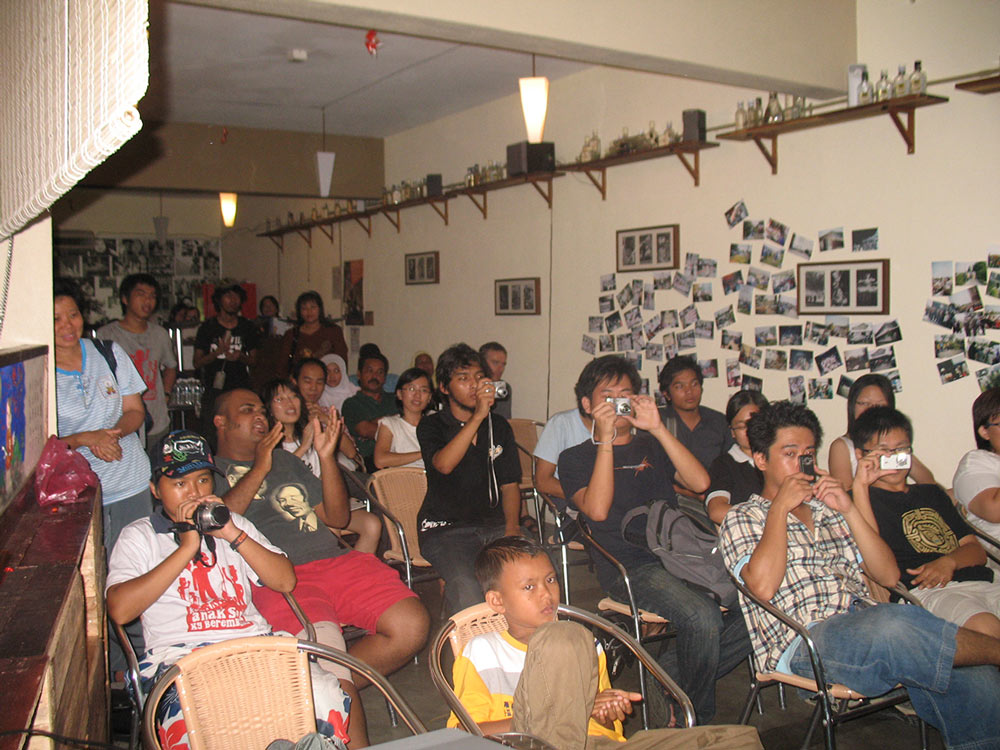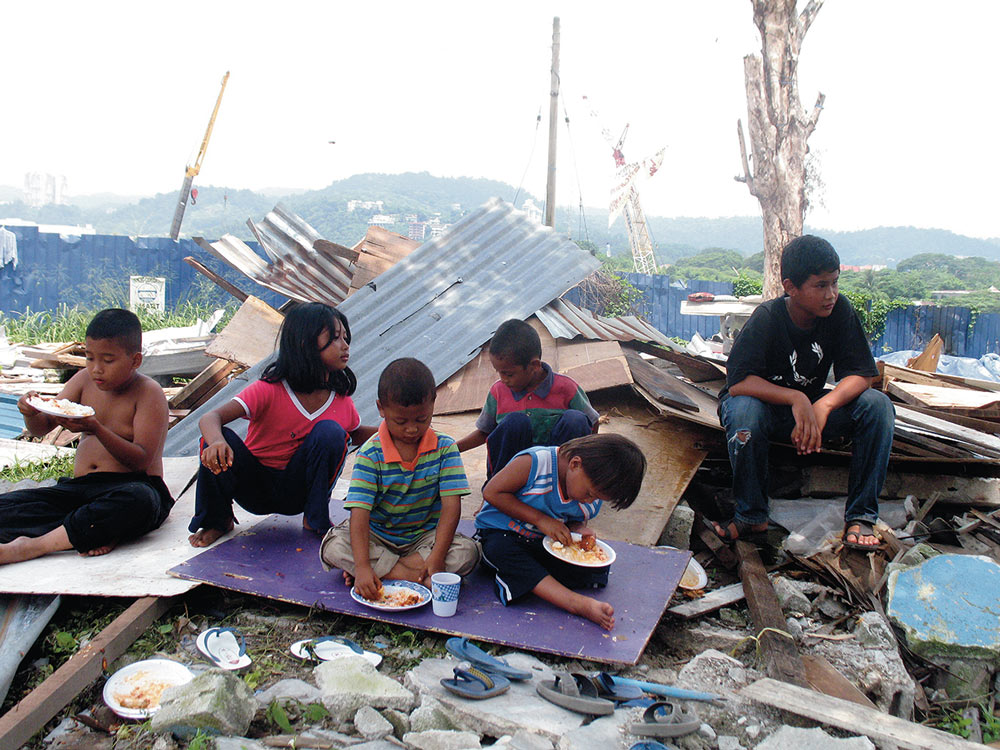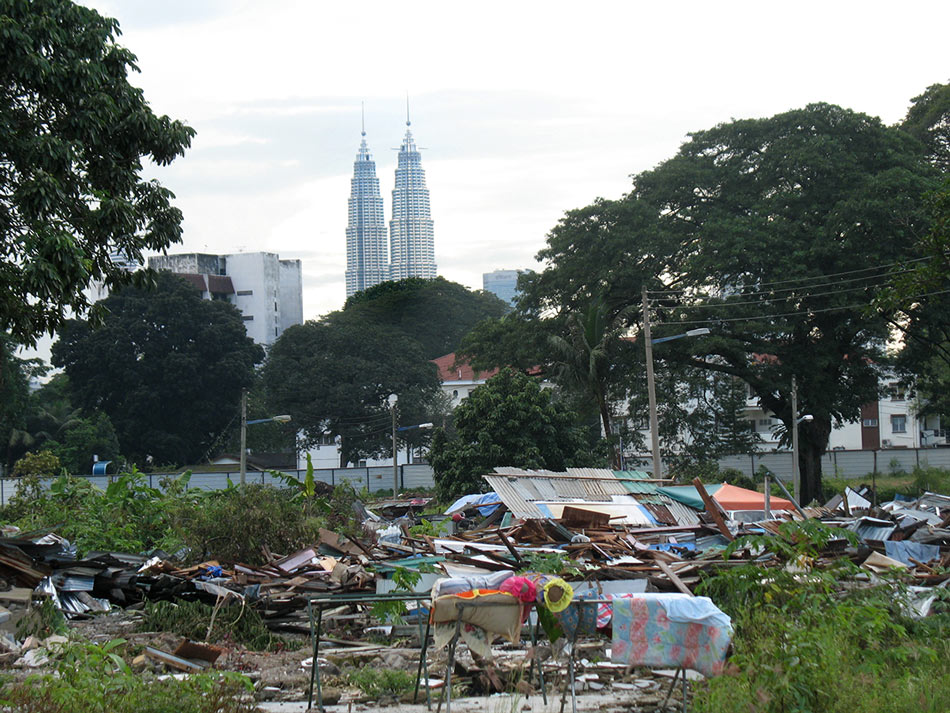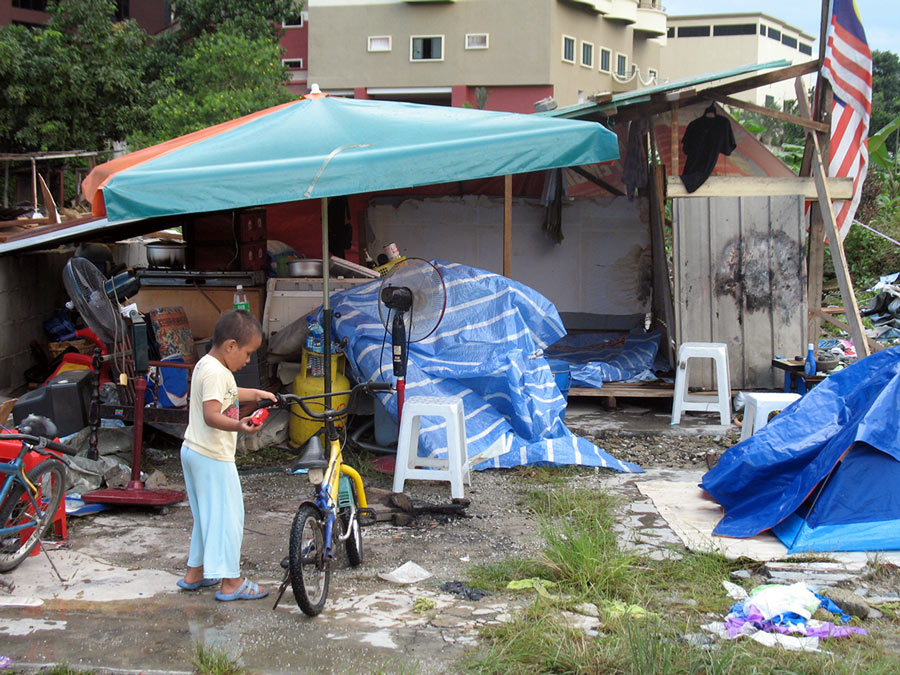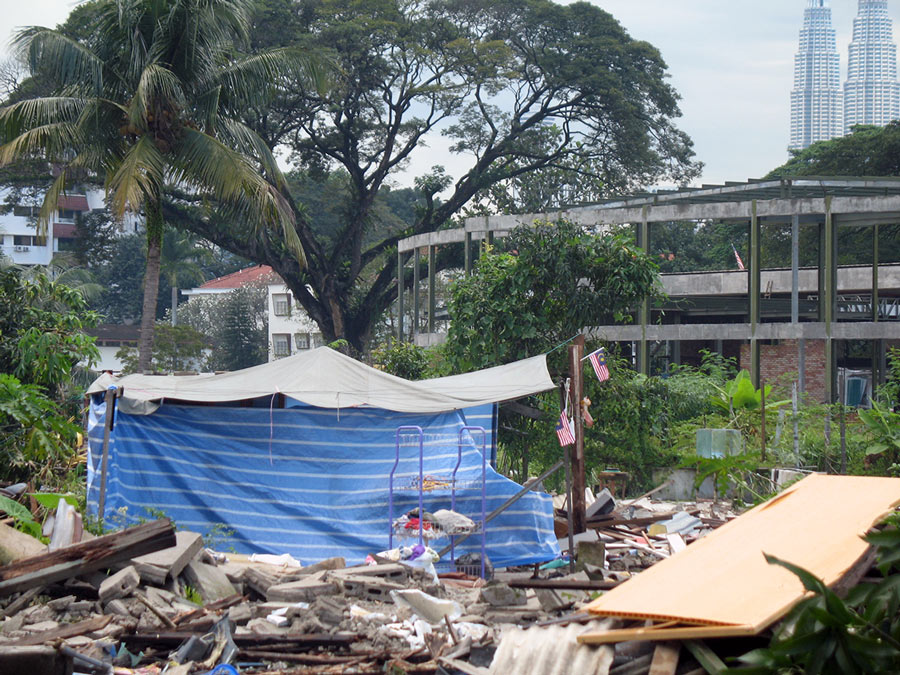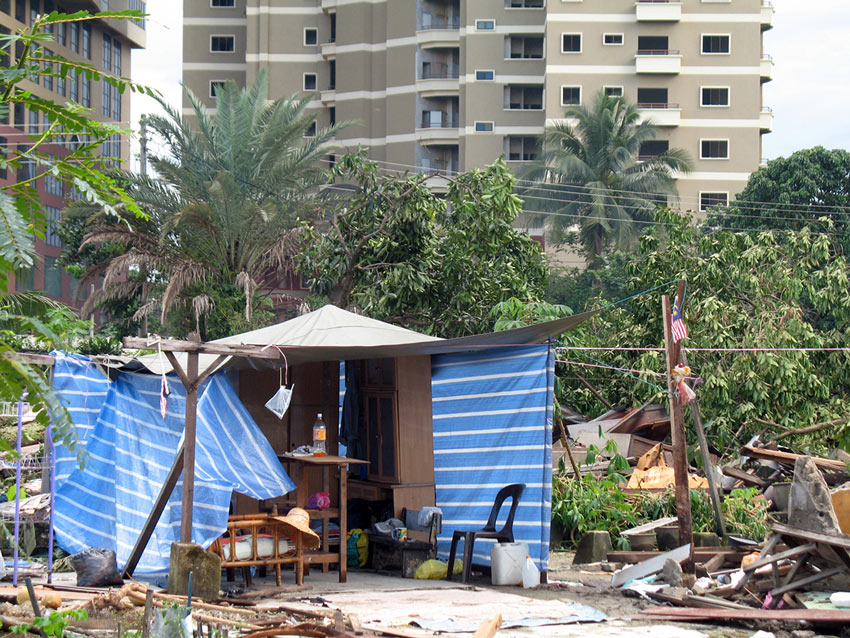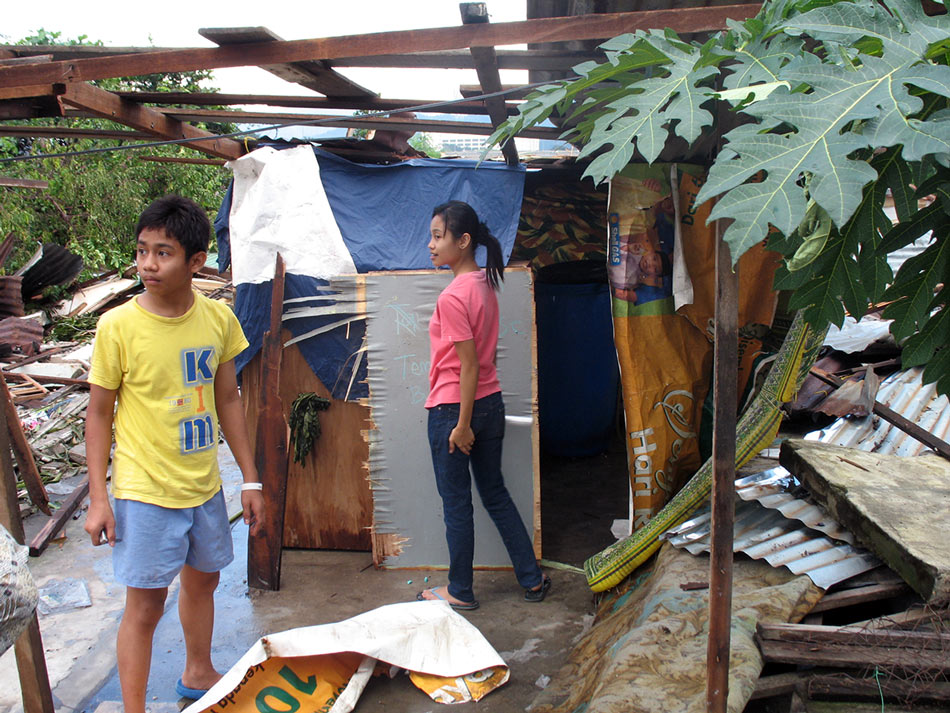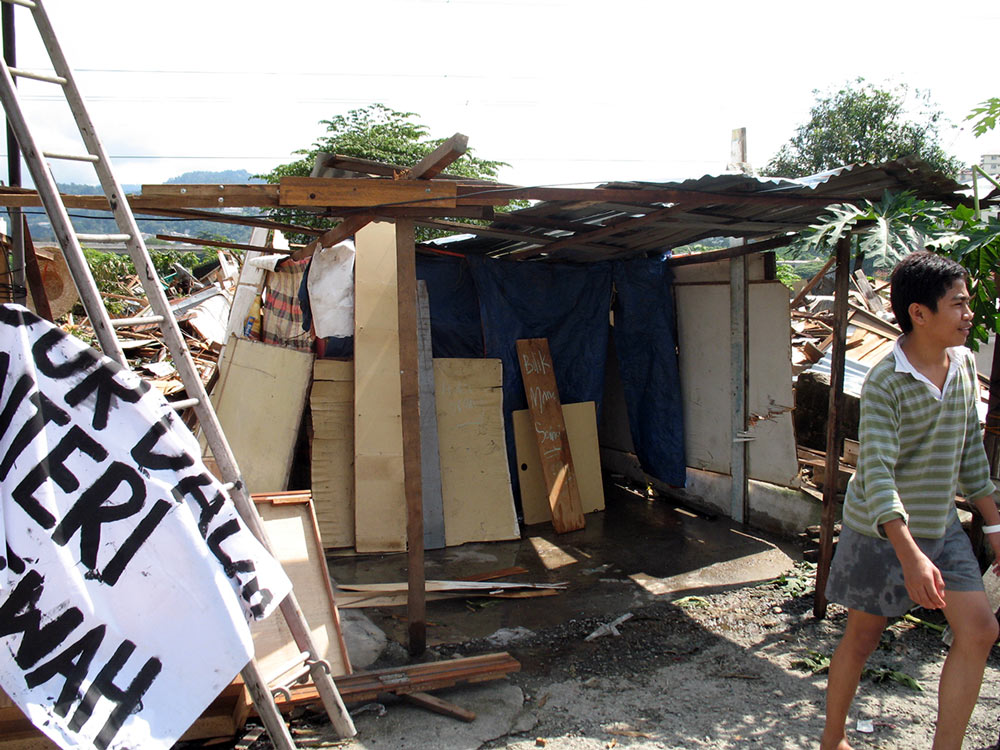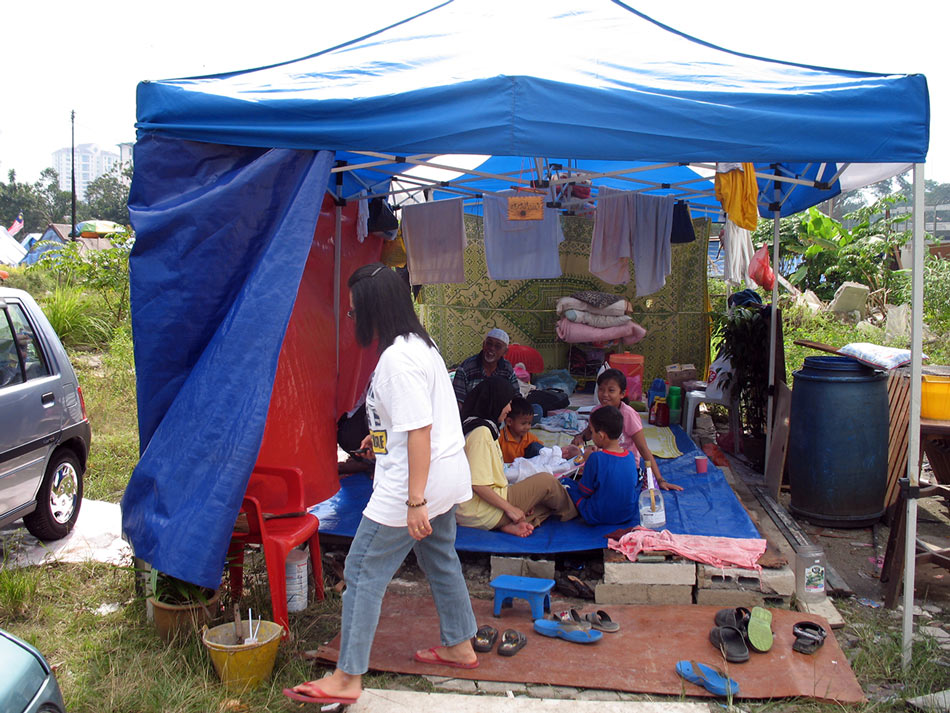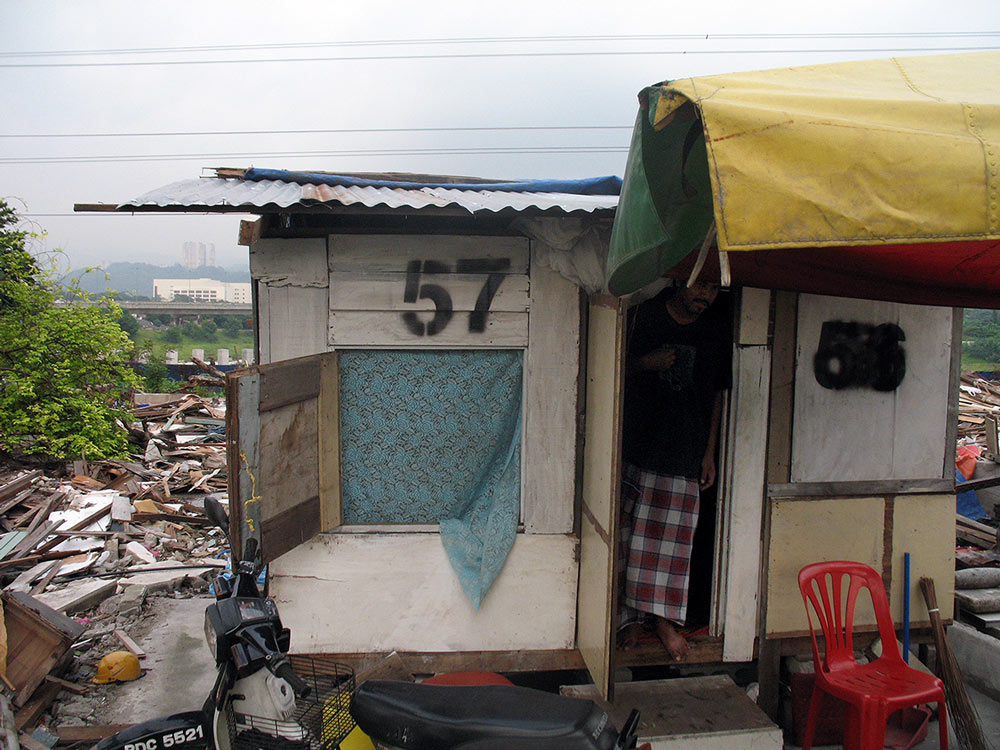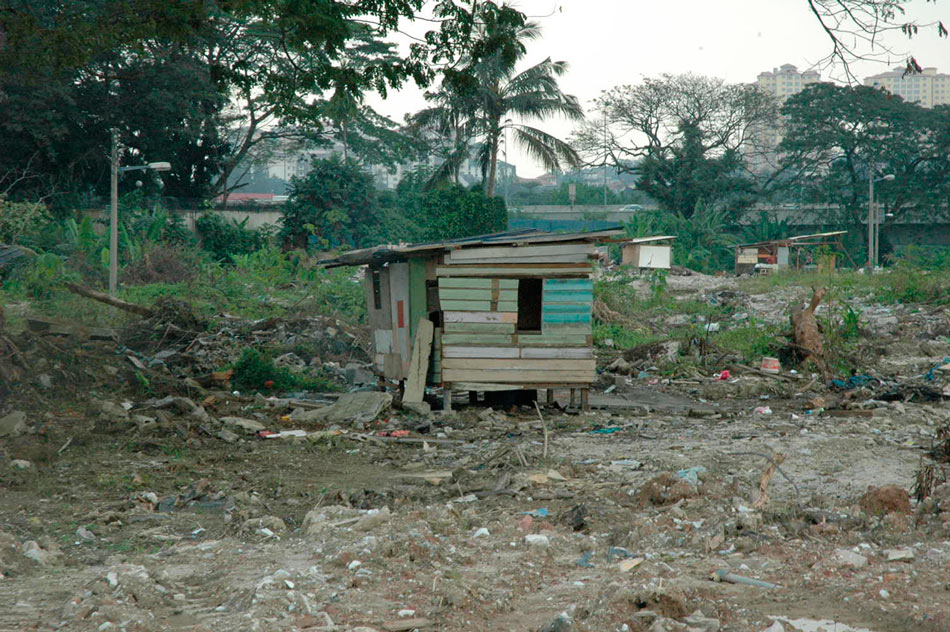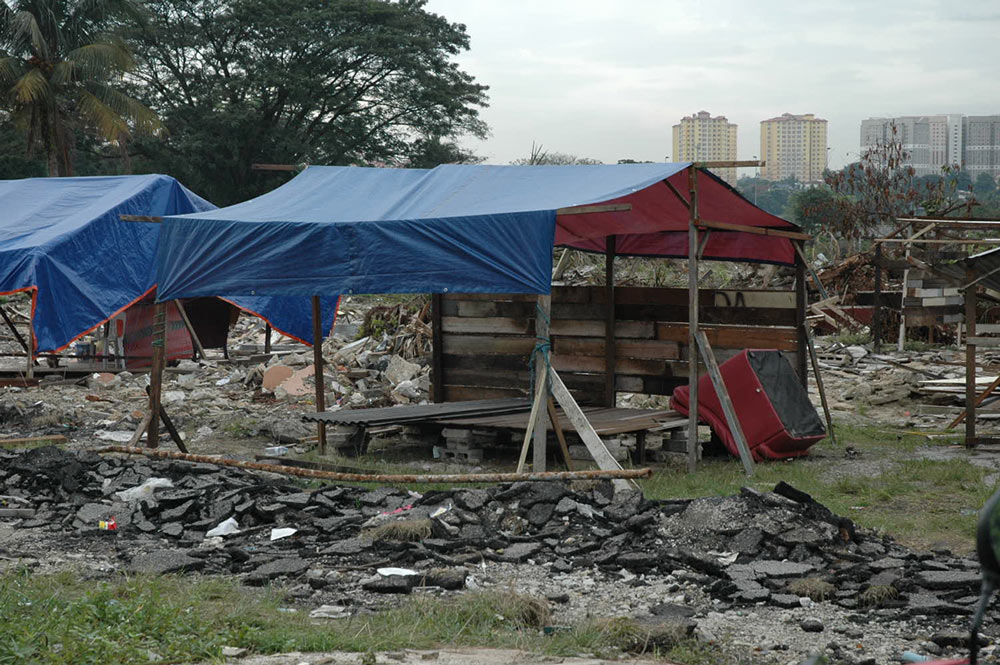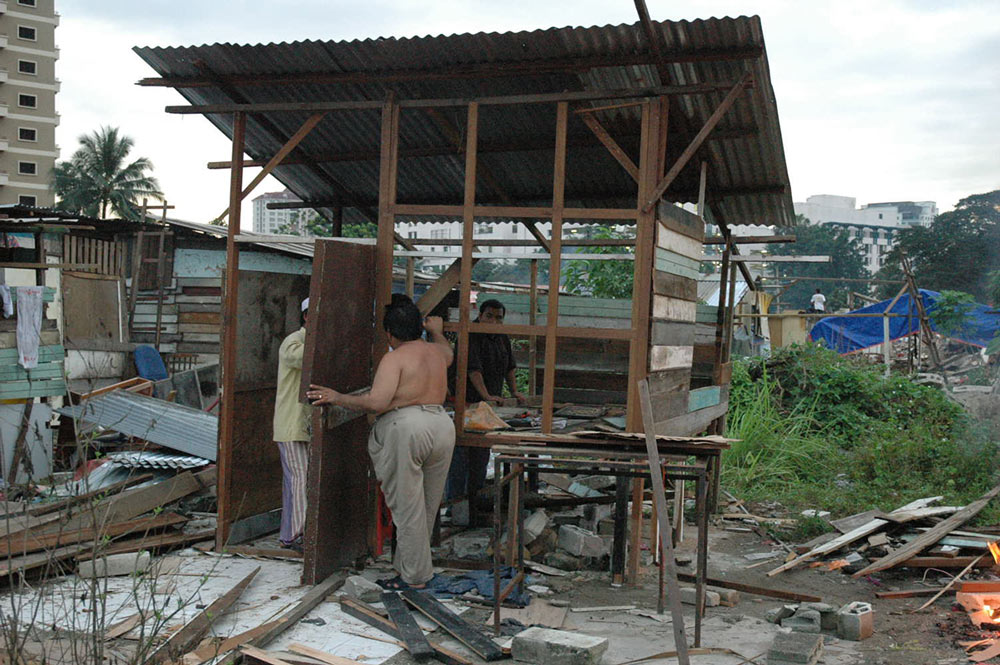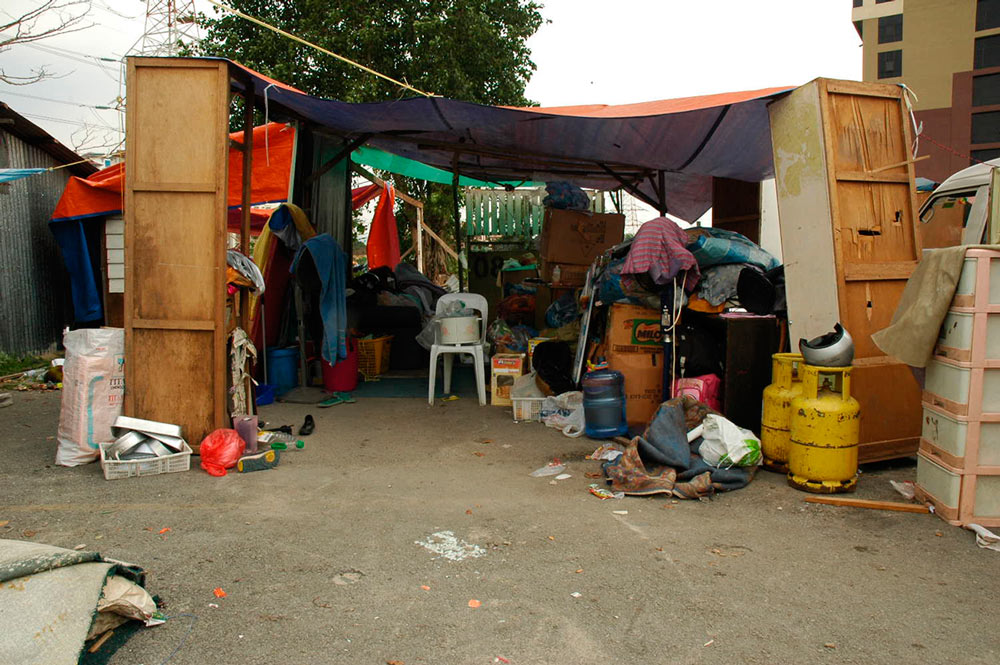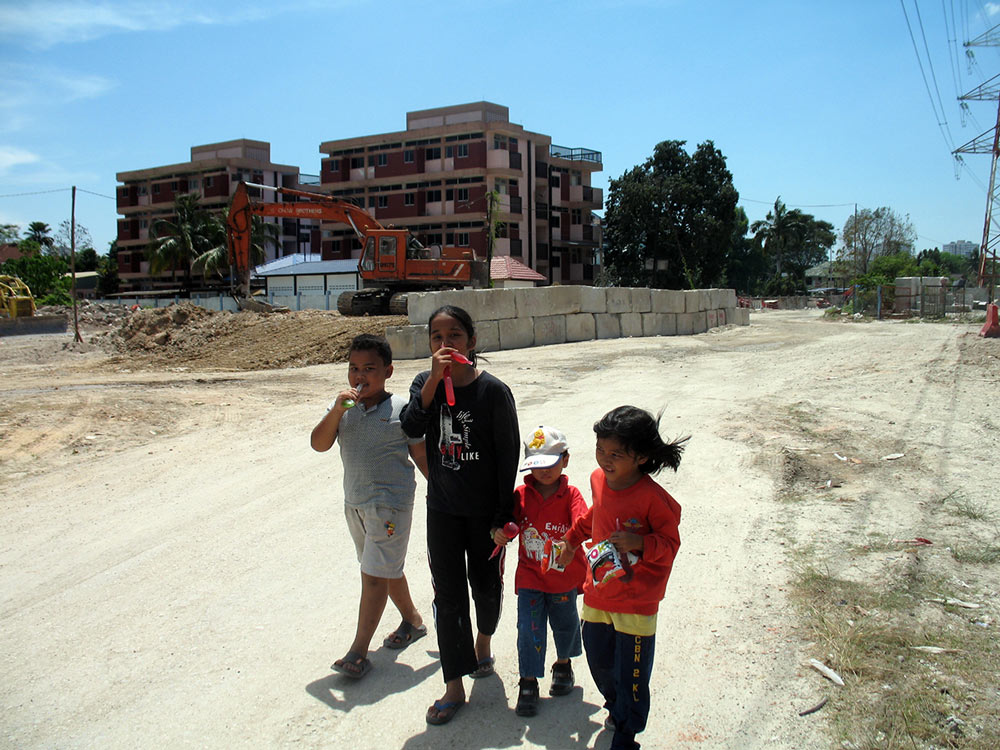Kampung Berembang
Project Kampung Seni 2006
Project Kampung Seni (Art Village) is an art project initiated by Lostgens’. Collaborating with Universiti Bangsar Utama (UBU), currently known as Kelab Bangsar Utama (KBU), and the residents of Kampung Berembang, this project seeks to document and share Kampung Berembang’s resistance from the forceful eviction of their homes by the city council.
The project harnesses art as a means to alleviate the traumatic experience of the children repeatedly finding their homes bulldozed. The project gathers children between 6 and 14 in workshops such as painting, singing and silk screen printing. These artworks from the workshop developed into a “wayang kulit” (shadow puppet) performance titled Wayang Kadbod – Tragedi Kg Berembang.
The wayang performance is entirely scripted and performed by the children. With their handmade cardboard puppets, the children narrate their experiences watching their homes destroyed, family and friends harassed and abused by authorities and finally witnessing their community surau demolished. The wayang show premiered at the demolition site of Kampung Berembang, Jalan Ampang, Kuala Lumpur on the 10th of December 2006, the eve of World Human Rights Day. This performance also toured around Peninsular Malaysia.
Dates of exhibition
10th December 2006
Venue
Kampung Berembang
Demolition
Pioneer City Settlers Forced Evict from 47-year-old village
Kampung Berembang is one of Kuala Lumpur’s earliest Malay villages. Established in 1958 after Malaysia independence, the newly formed Malaysian government encouraged more Malay settlers to set up homes close to the city. The residents are one of the earliest city settlers of Malaysia.
Kampung Berembang is one of the many villages affected by the Selangor state ‘Zero Squatters’ policy. This policy aims to eradicate all squatters by 2005, and has destroyed many villages often dubbed as squatters without reasonable compensation and adequate housing replacement. According to Malaysian law, the council should compensate a house within 4km from the origins, yet residents were offered a tiny two-bedroom leasehold apartment, 28 km away in Puchong, Selangor.
The forceful eviction has brought turmoil and confusion to the villages. Many NGOs, opposition political parties and activists came together to join forces with Kampung Berembang, highlighting their cause. Through activist friends from UBU and Hishamuddin Rais, Lostgens’ members learnt about the situation in Kampung Berembang.
The coalition of NGOs and social activists had two parts running in parallel, legal and cultural. Lostgens and UBU were active culturally while focusing on bringing this injustice to court were student activist denmark, grassroots movement Jaringan Rakyat Tertindas (Jerit) and PSM. Although the case was pending in court, the city council continued with the demolitions. Kampung Berembang, caught in a land grab situation, had the title of their land inconsistently flipped from government land to private lands sold to a developer.
In 2007 the villagers finally won the case with compensation and a flat unit for each family within the vicinity. The construction of the flats which began in 2005 was delayed and only completed in 2013. During the wait, the families stayed beneath Tenaga Nasional Bhd (TNB) high tension cables.
Invitations and the Act of Reconstruction
Arriving during the aftermath of the first of many demolitions, Lostgens’ step into the kampung was a distressing scene. Homes flattened with dust and wood strewn, the villagers were angry and frightened. Seeing the situation, Lostgens’ collective immediately thought about how we can contribute. Everyday Lostgens’ members visit the village, getting to know the children of the villagers intimately. We learnt about the needs and potential of each child. Villagers are not victims, they can create their own homes together.
“But when you think about it, there is nothing you can do. The villagers faced forced evictions. This is a very practical problem, the houses will be demolished when the time is up.”
Within one month, the village faced demolition six times. Village homes destroyed, the villagers forced to live in a simple make-shift tent. Sanitation was the most immediate need. Yet the villagers and supporters persevered and rebuilt the demolished buildings. In true ‘gotong-royong’ spirit despite the repeated bulldozing, the villagers rebuilt again. As it turns out, sweaty labour eliminates the feeling of powerlessness. The process of constructing together is more precious than the finished product. The most tenacious act of resistance is the reconstruction of the village together. The act of reconstruction conveys an important message:
Art Activities
“We will not give up our homes, nor will we compromise with violence.
Move. This is our village.
Even if you come to demolish it, we will rebuild it again!”
Visit and Study
Children
When the villagers had to face enforcement officers from the council, backed by police and the Federal Reserve Unit (FRU), it was like a battlefield. In the bid to protect the village, the villagers used their bodies to block the bulldozers from destroying their homes and community. The children were equally fearful and uneasy. At times of extremities, the needs of children are inevitably ignored.
Everyday Yeoh Liang Heng visits the village, getting to know the village children intimately. He learnt about the needs and potential of each child. Villagers are not victims, they can create their own homes together.
“The children still go to school as usual in the morning, but when they come back from class, in their school uniforms, they watch their homes flatten to the ground. “
The hearts of the children are hurt and under tremendous pressure. The adults are at the front line while the children have little means to fight back. Noticing the predicament of the children, Lostgens’ members began to draw and share their art practice in free workshops. The workshops provide the children with an avenue of expression for their emotions.
“I started to draw some simple subjects, such as the ideal home, and then gently entered the experience of being forcefully evicted. Finally, with the children, we made those paintings into shadow puppets.”
Relationality and Decision making – Wayang Kadboard- Tragedi Kg Berembang
Art calms and heals the heart. On the eve of Worlds Human Rights day 10th of December 2016, a bunch of children crowd behind a curtain, the youngest only six years old. A light shines through, and the shadow puppet show begins. The wayang show powerfully narrates the story by various childlike voices.
Wayang Kadboard – Tragedi Kg Berembang, gained attention from other communities with invitations to perform in Kuala Lumpur , Selangor and Penang. Once the performance threatened for cancellation in Penang deemed to be illegal by the authorities. As artist-activists, we must ask ourselves how can children bear such risks to defy authorities?
Performance
Sharing and Discussion
“The decision to go ahead with the performance should be decided by the children.” Lostgens’ Member Yeoh.
A meeting firstly called for an analysis and a breakdown of the situation by Yeoh .Next, the children formed a discussion group and made the decision.
“My position is to be a coordinator and to assist the children. They make decisions on their own. This empowers the children with their rights.”
Seriously, the children discussed among themselves and finally decided they still want to go ahead with the performance, but with the condition that their parents must be with them.
“I think they can make independent decisions, and they show bravery by taking this decision.”
Daily Life
Socially Engaged Art : Standing up for Human rights
Yeoh (Lostgens’) and Fitry ( UBU ) also had to overcome their internal fears. Choosing to side with the villagers’ struggle against eviction, both Yeoh and Fitry were intimidated and violently beaten by officers of the Ampang City Council.
“I will be scared at that moment too because I am not mentally prepared and I don’t know how to respond.” On the shock of being buried by Fitry
“I am not the kind of person who stands on the front line. Those physical conflicts made me reevaluate my position in the struggle afterwards.” Lostgens’ member Yeoh
Fear and not knowing what to do are similar feelings shared by Yeoh Liang Heng and the villagers. Changing social structures is also a kind of creation. Artists are more accustomed to creating independently, but Yeoh prefers to build a platform to gather ideas. On his conception of social change,
“In my opinion, what is important in socially engaged art is the degree of participation and personal relationality the artists create in society. By collaborating with non-artist participants, the artists are part of a process which creates a change in society. This process is also a kind of creation where the concept of belief is put into practice. The personal direction of the artists is not that important. What takes precedent is a collective creation…
.. I believe that social progress is gradual, and change happens only through collective action. Because I believe this, the way I do things is to gather everyone to sit down, think about problems together, and plan together. I hope more people will participate.”
“The inclination towards the emergence of heroes in society needs to be broken. To overthrow this darkness is dependent on every person’s efforts.”
To the very end, the question that begs to be asked is:
“What do you want to create and how do you go about it?
Just like curating, how do we integrate things, this includes creation and planning. “
In Malaysia, people still hope that good leaders will lead the change.
Photos credit : Lostgens and UBU (Universiti Bangsa Utama)

